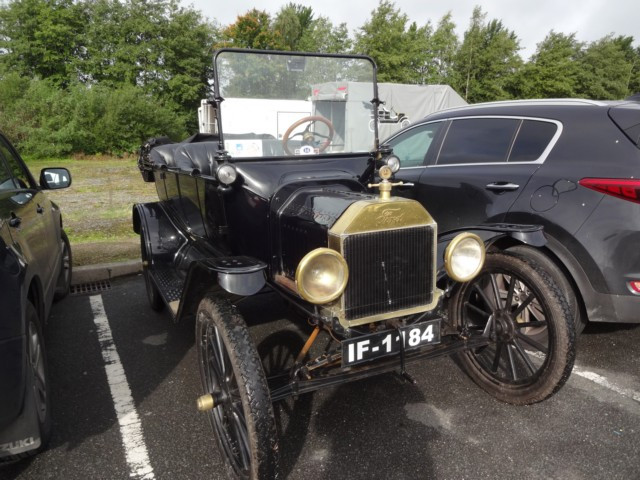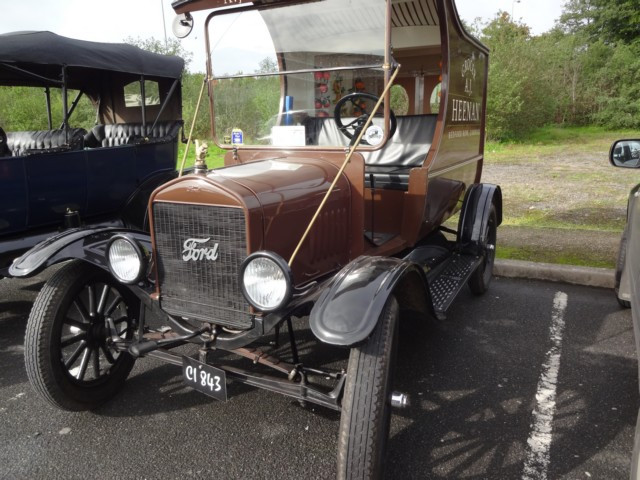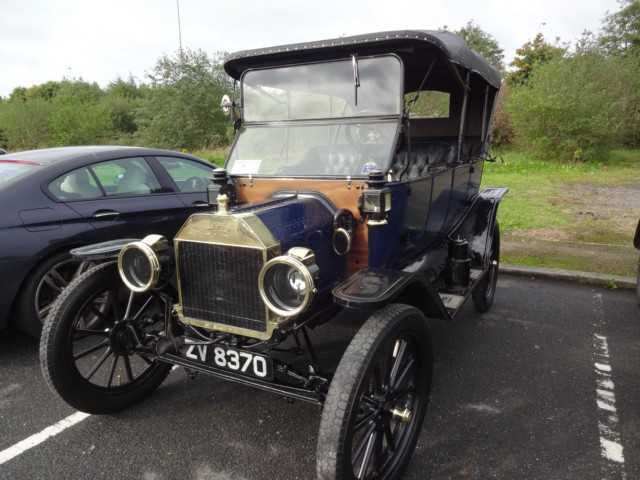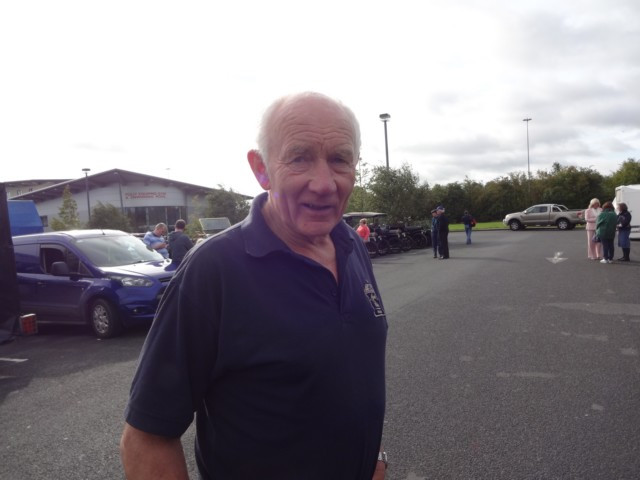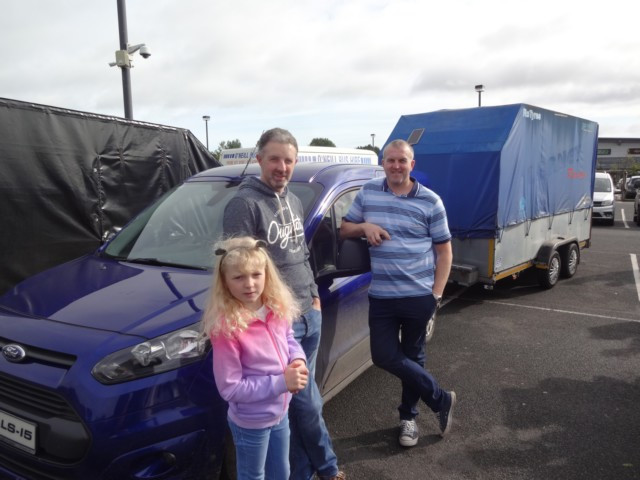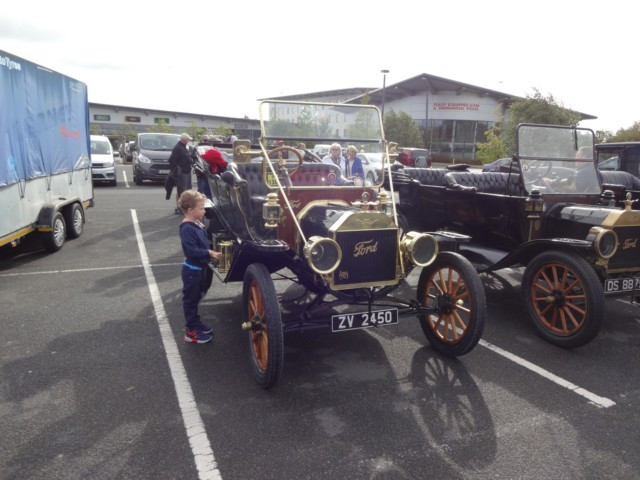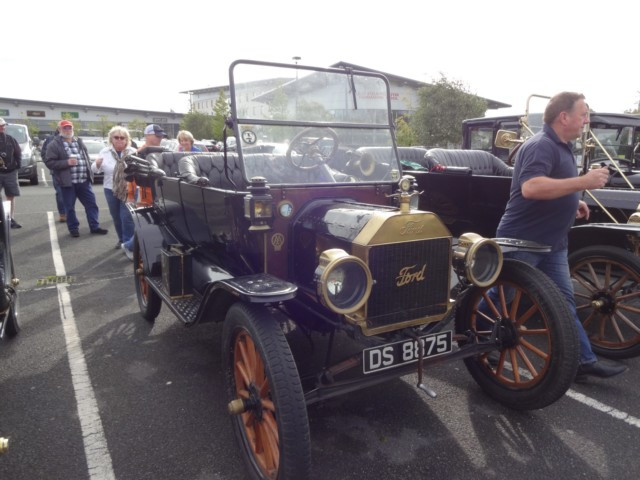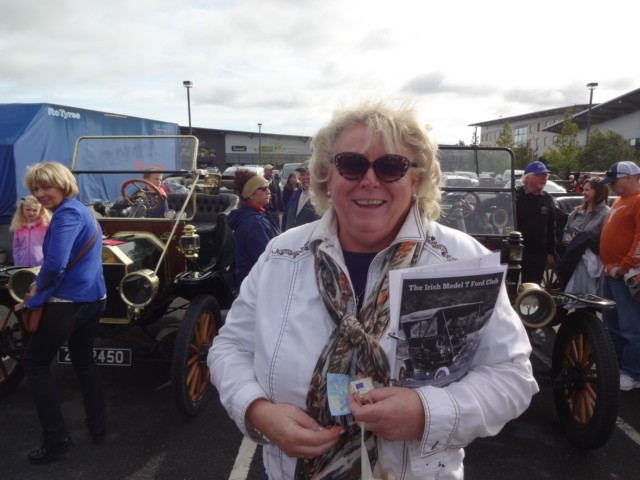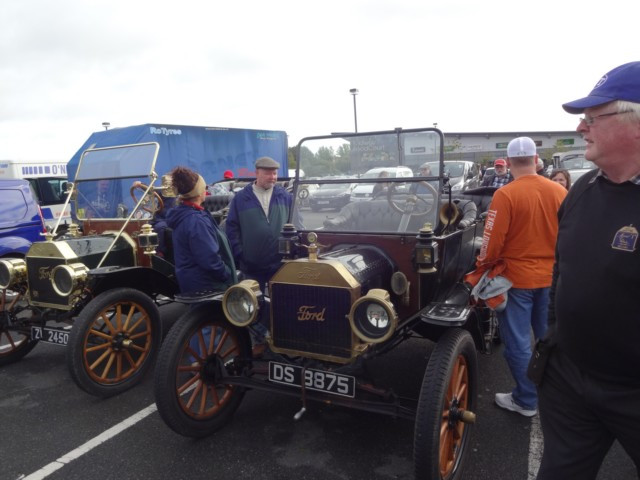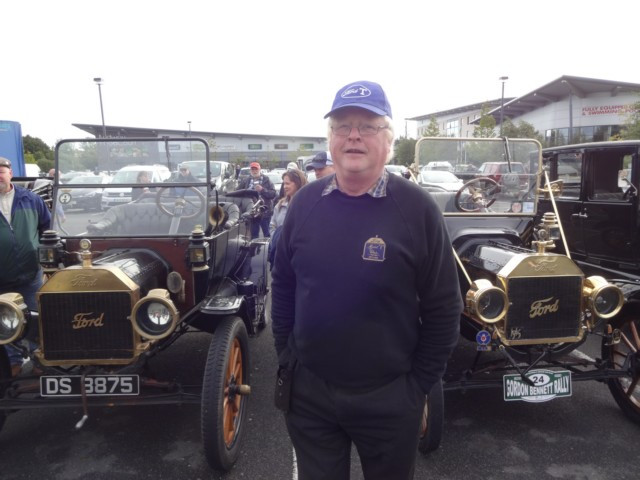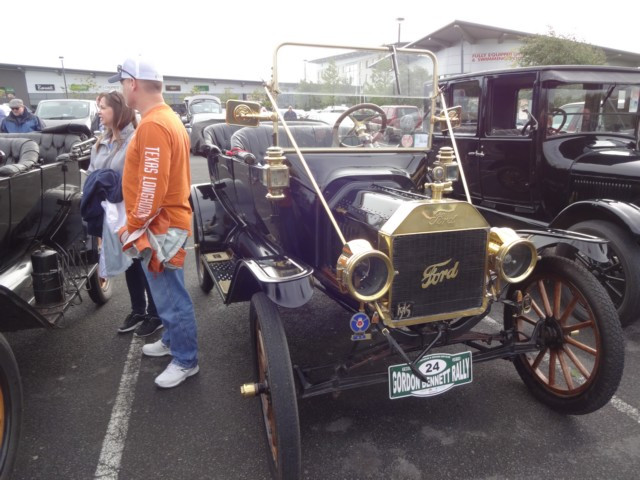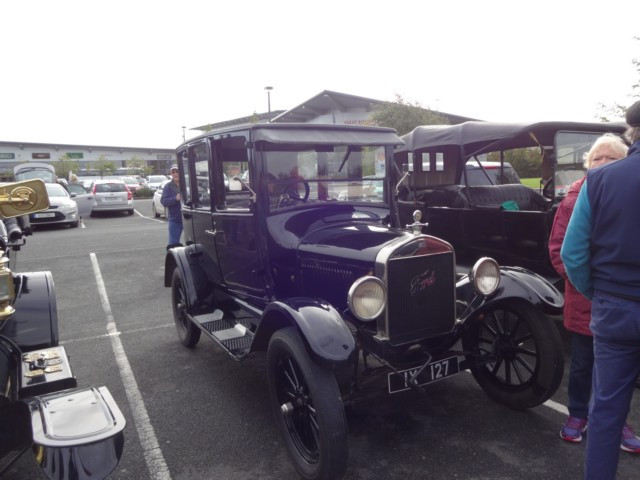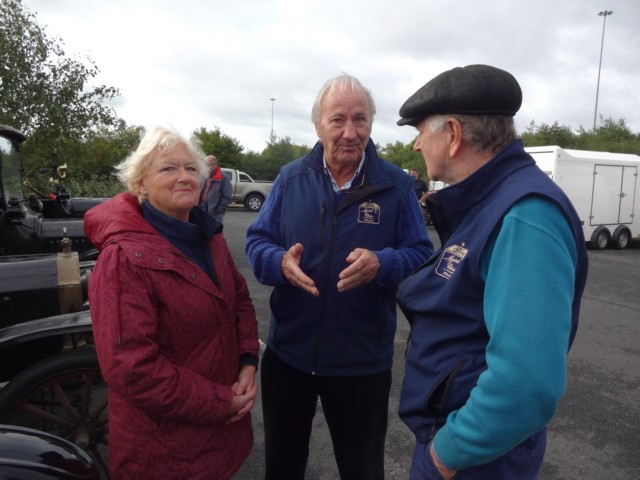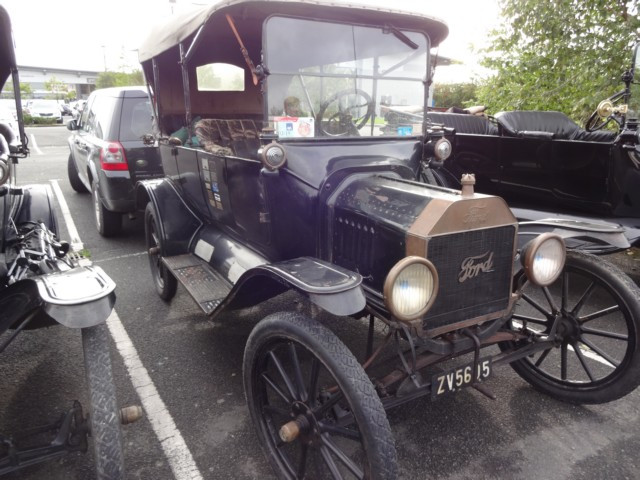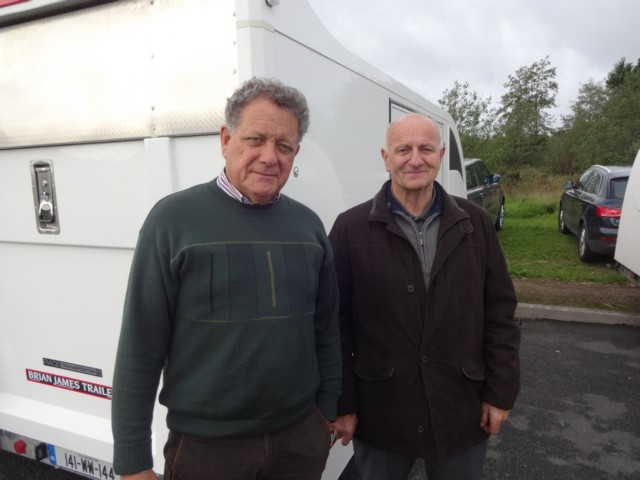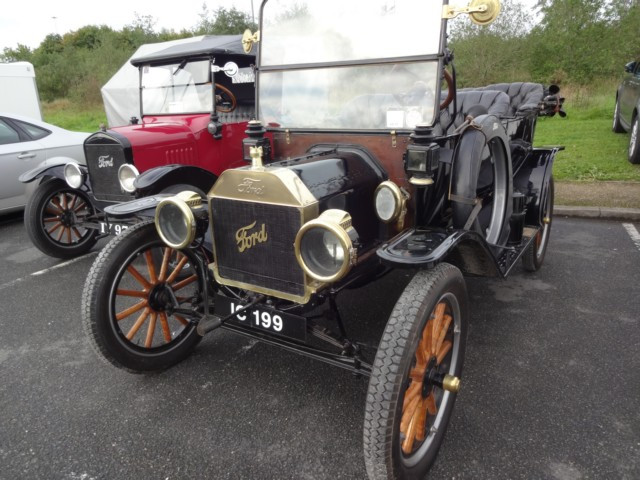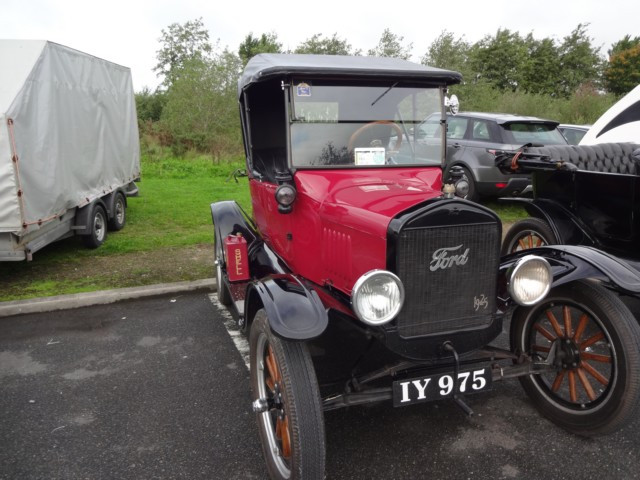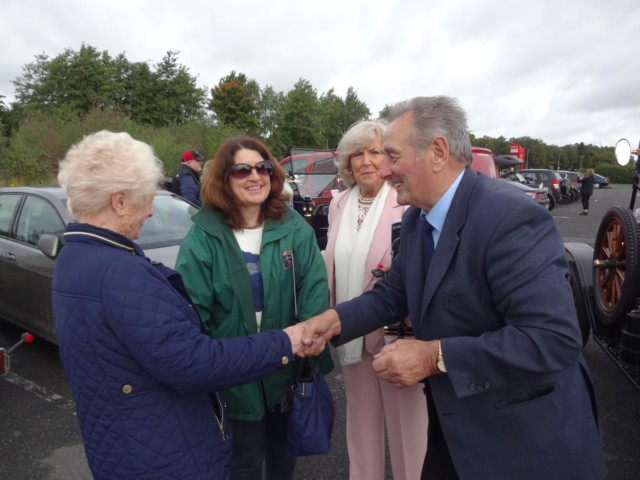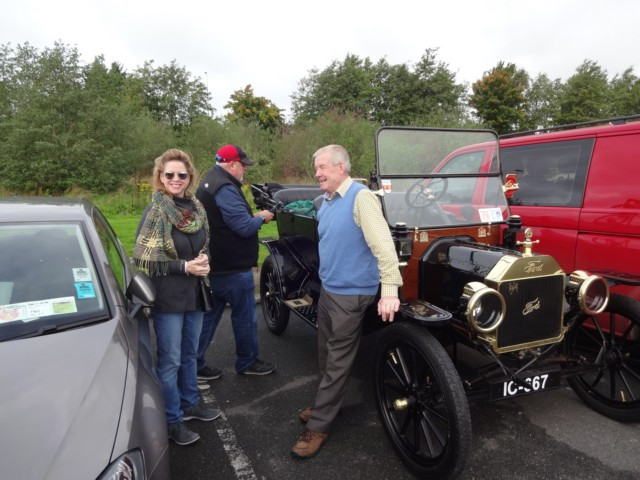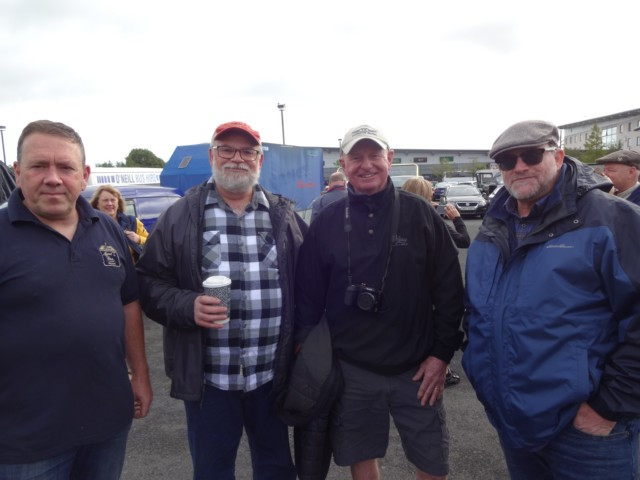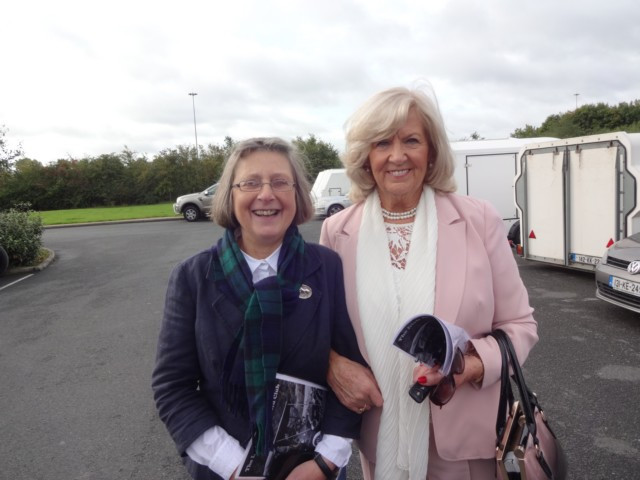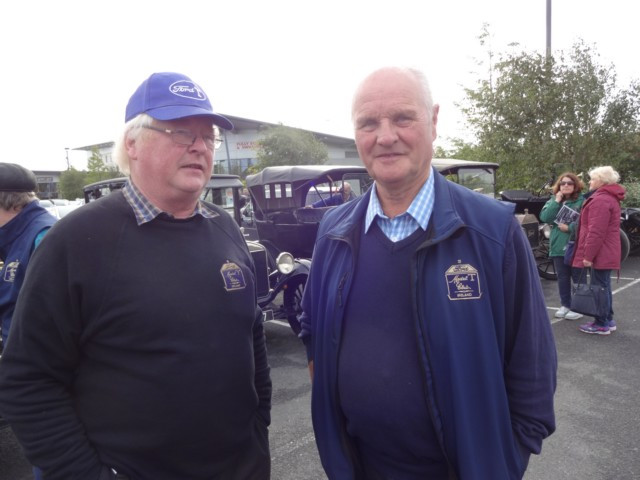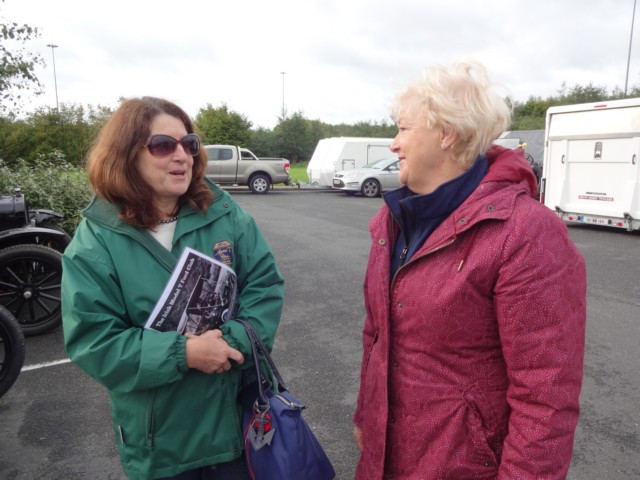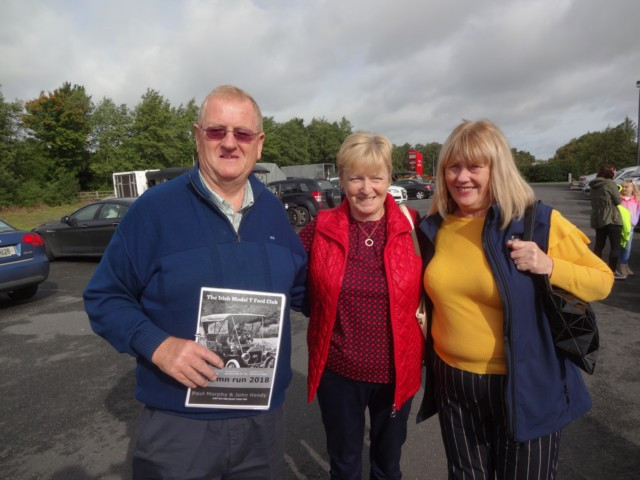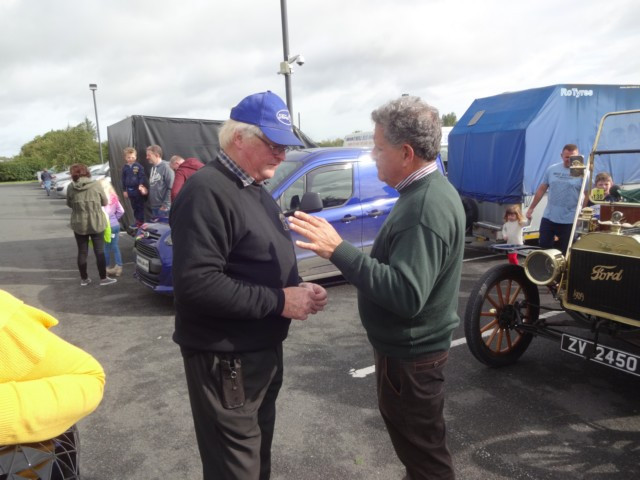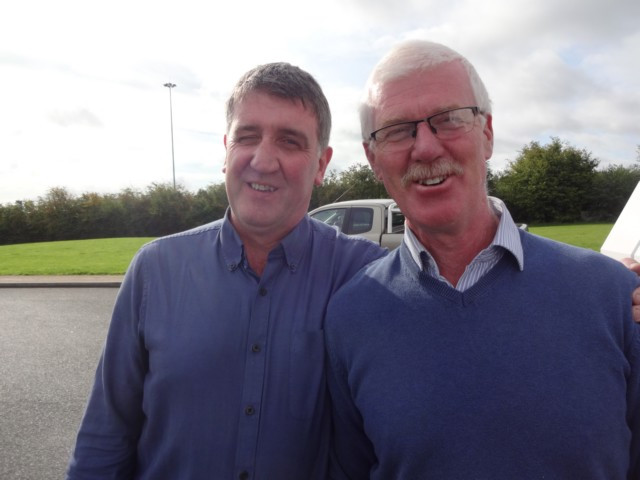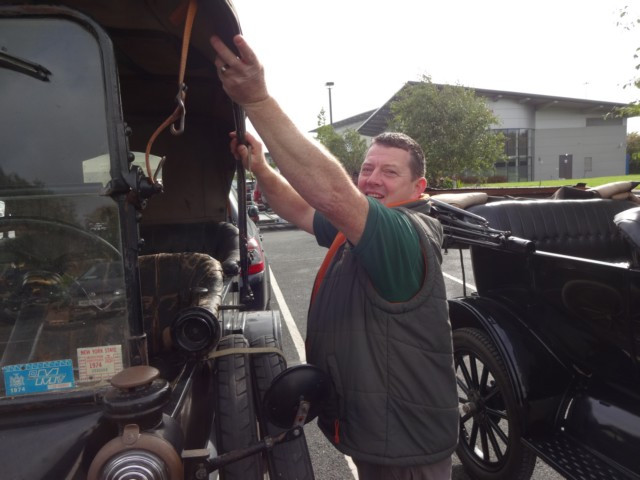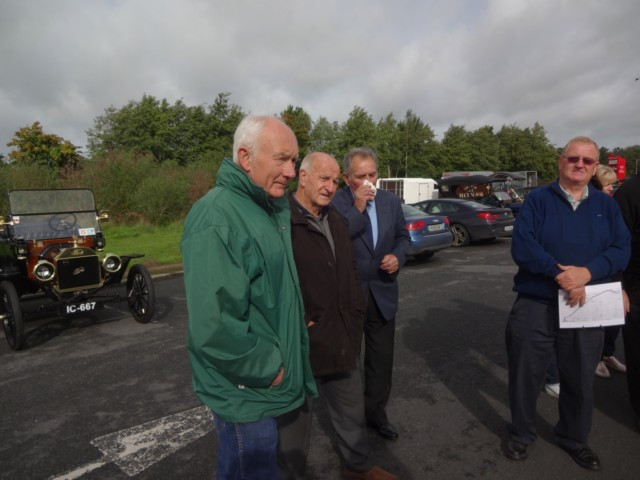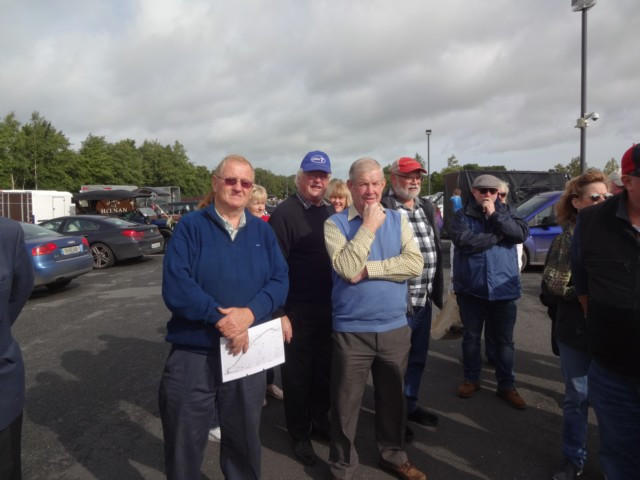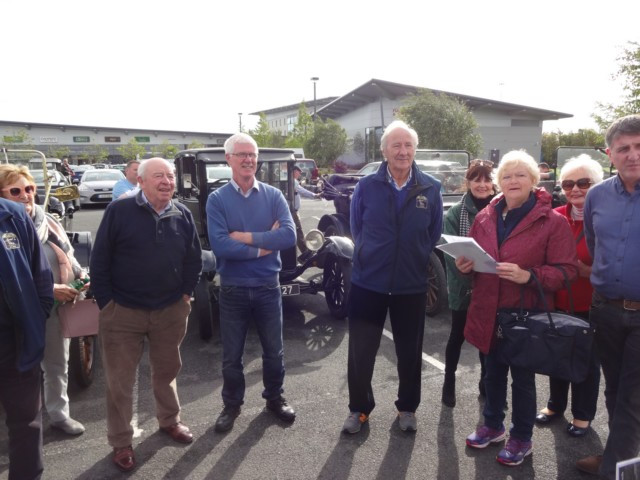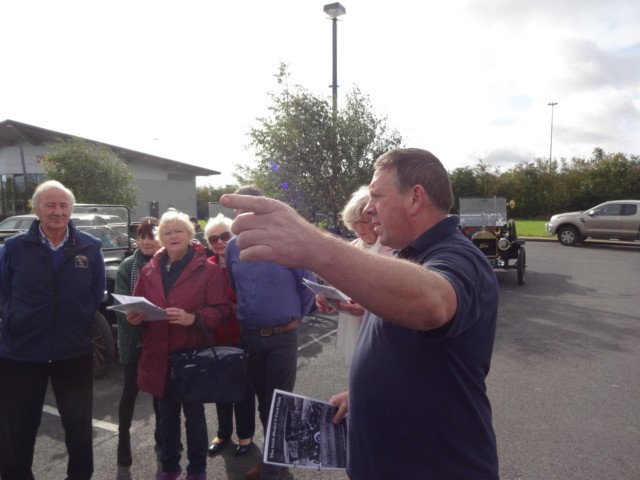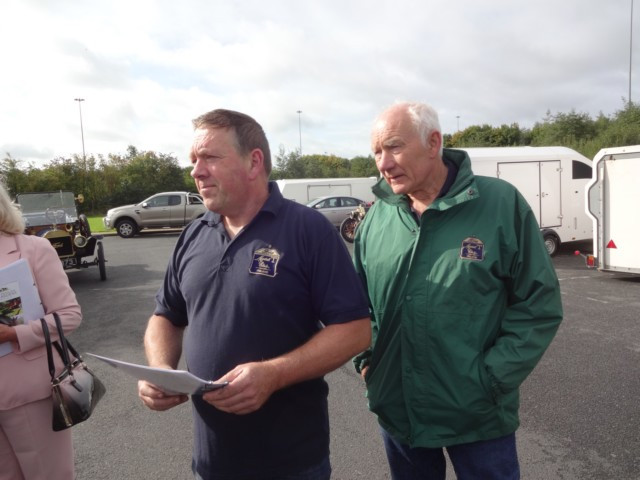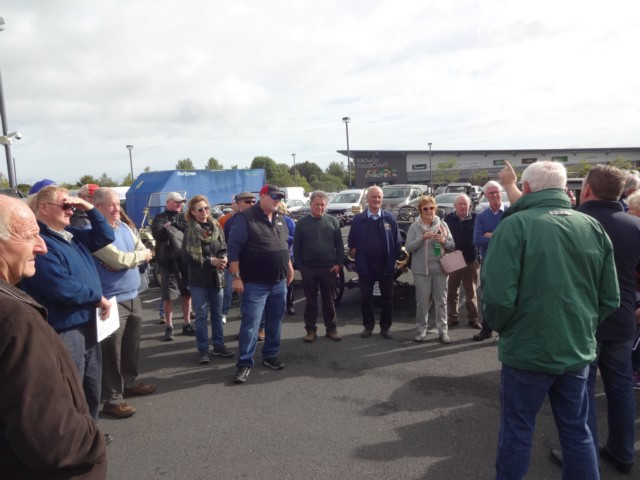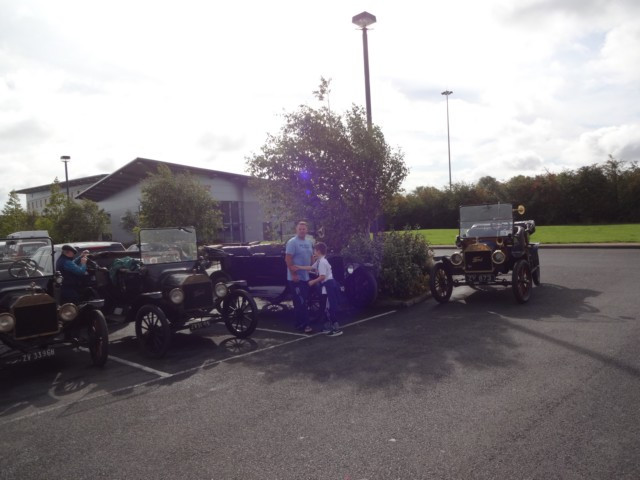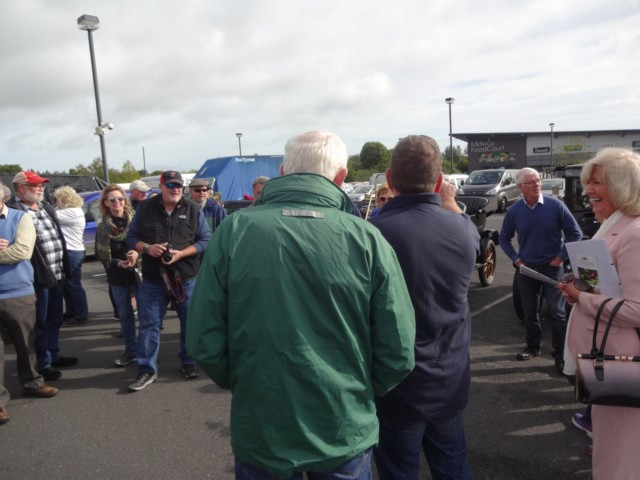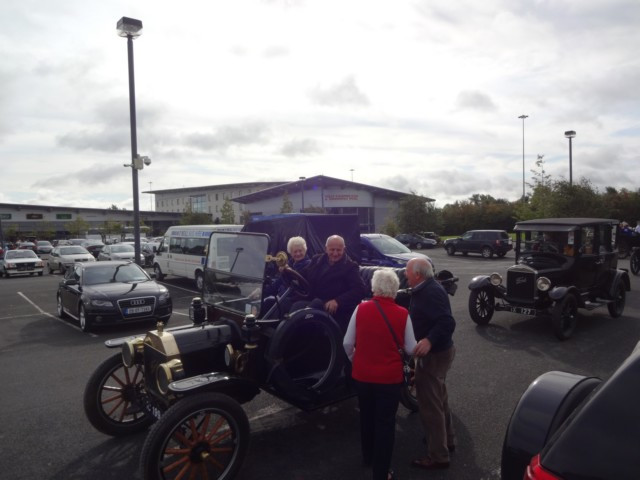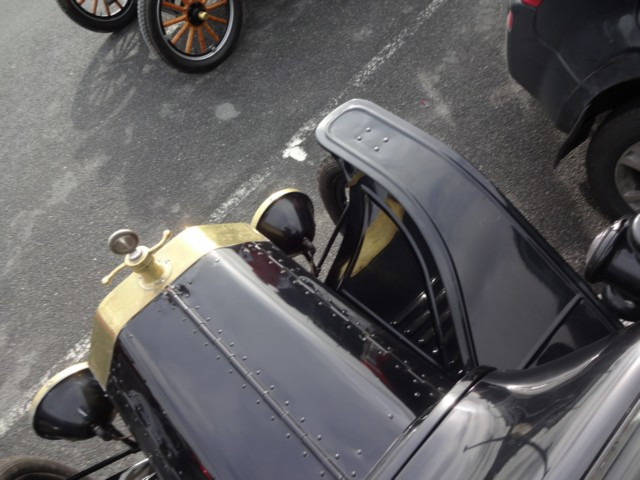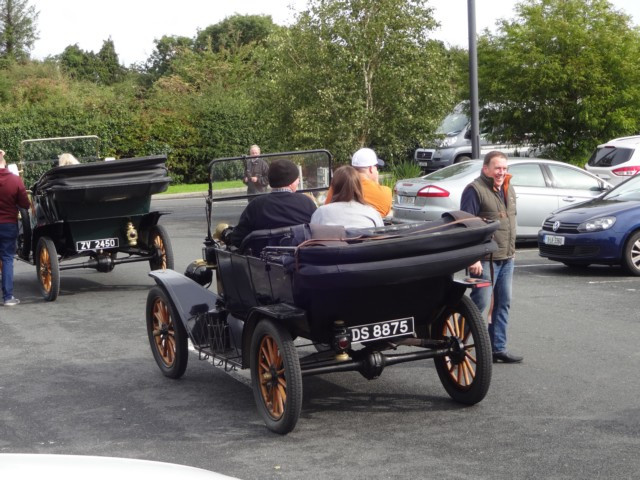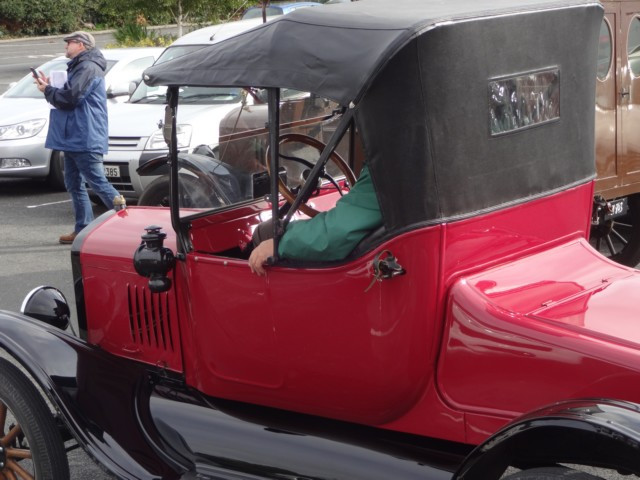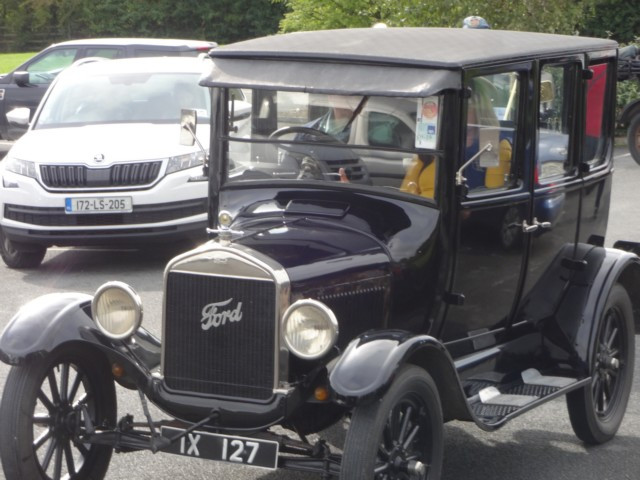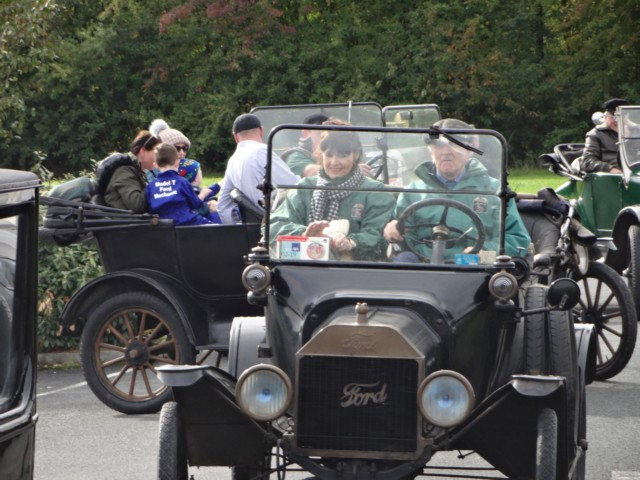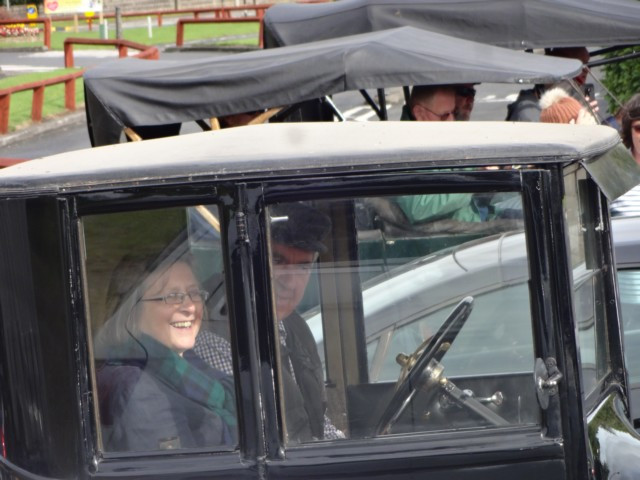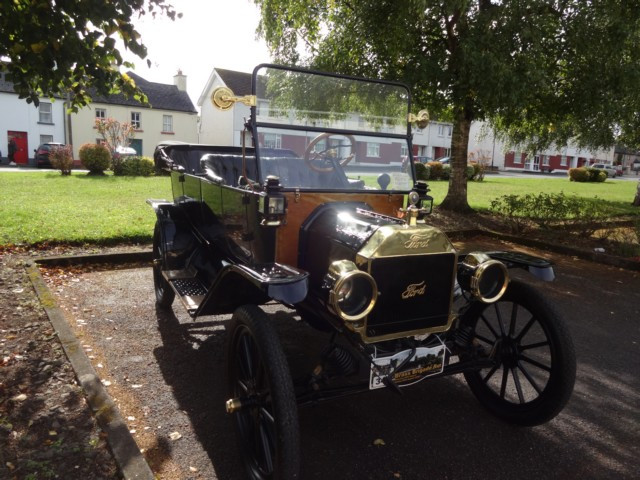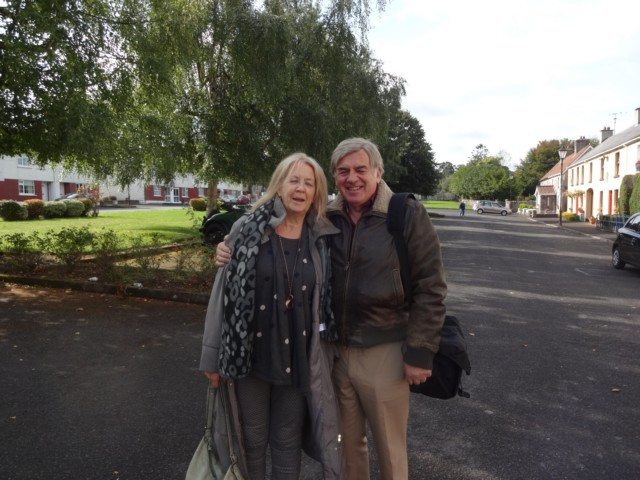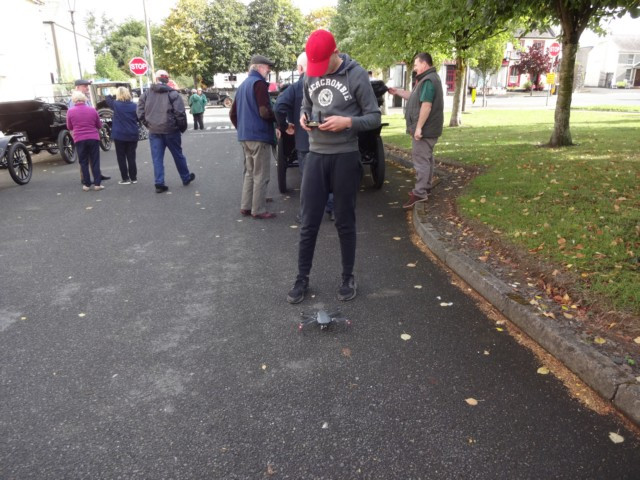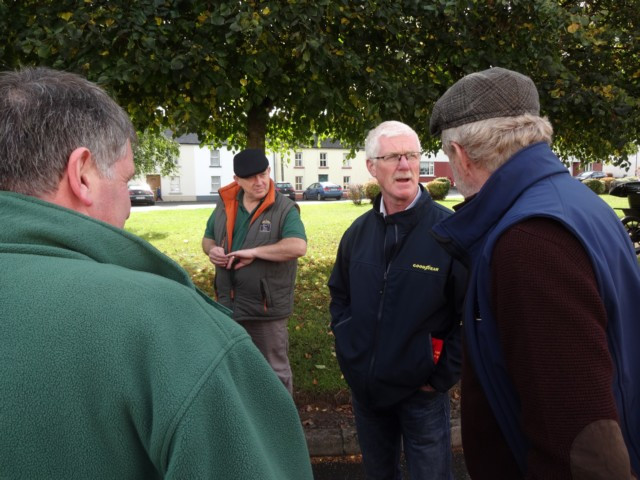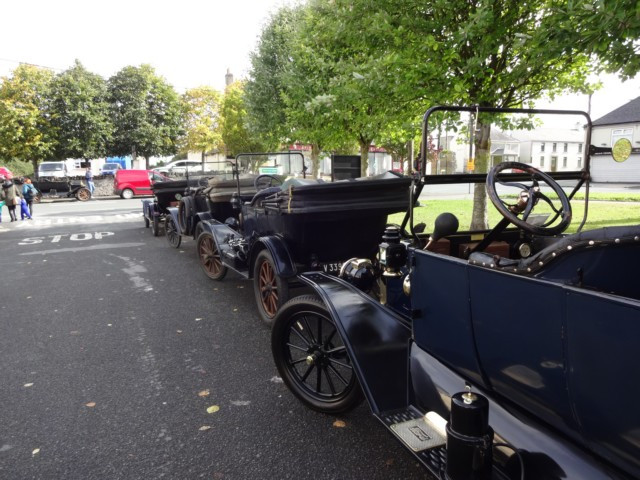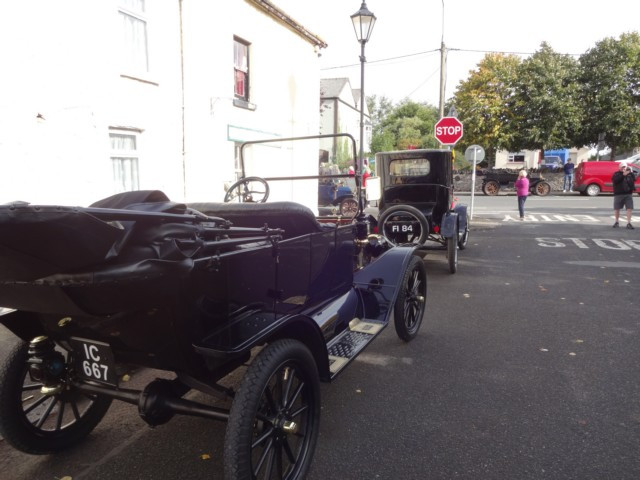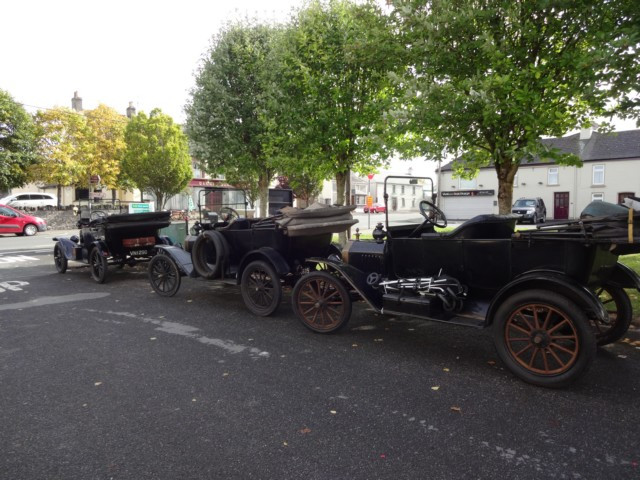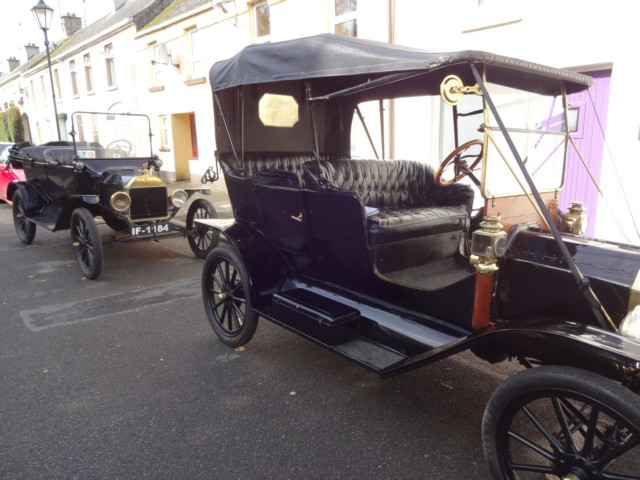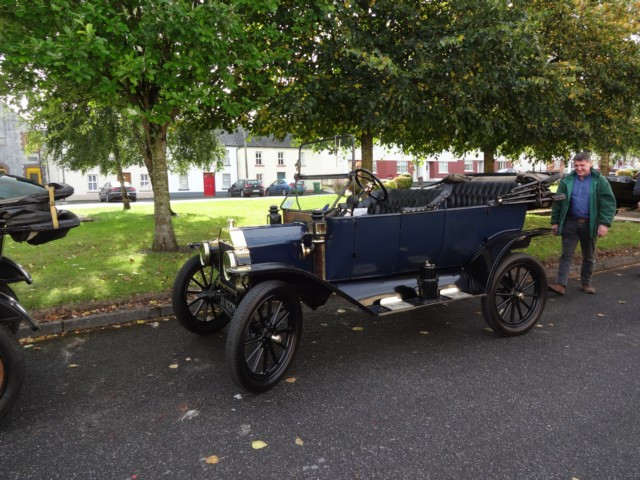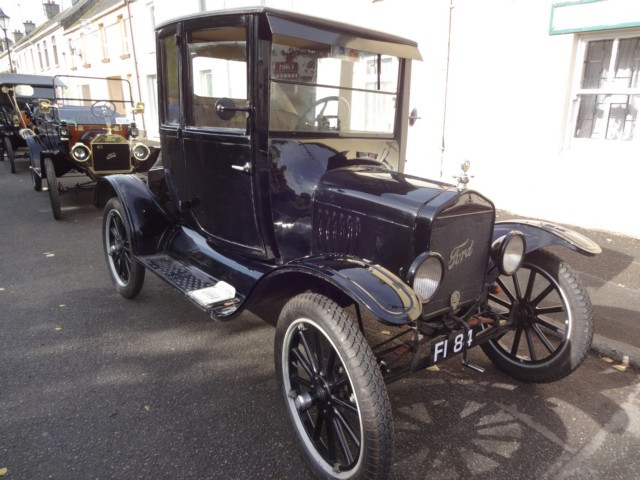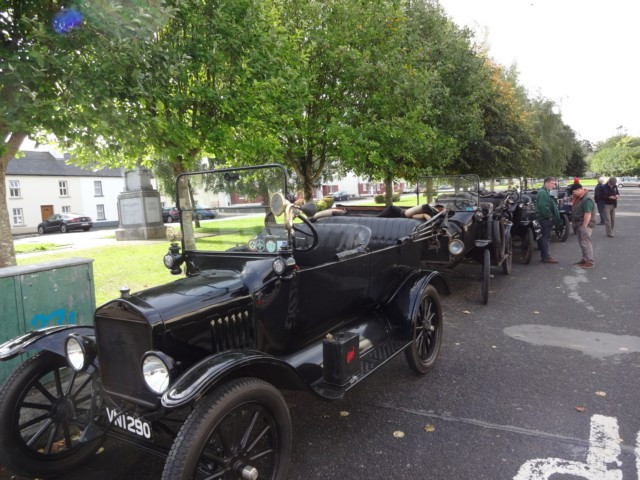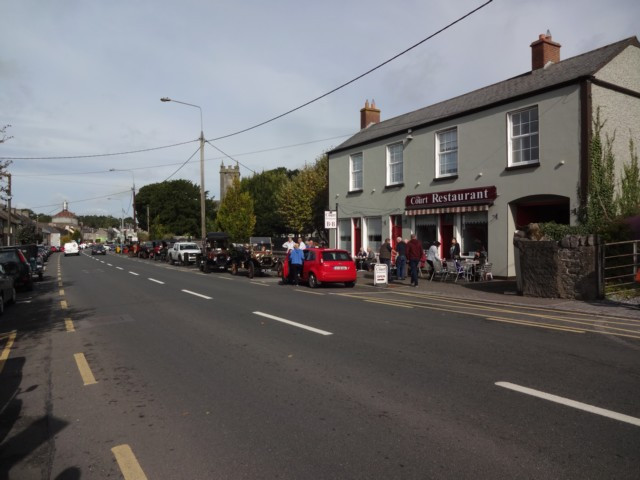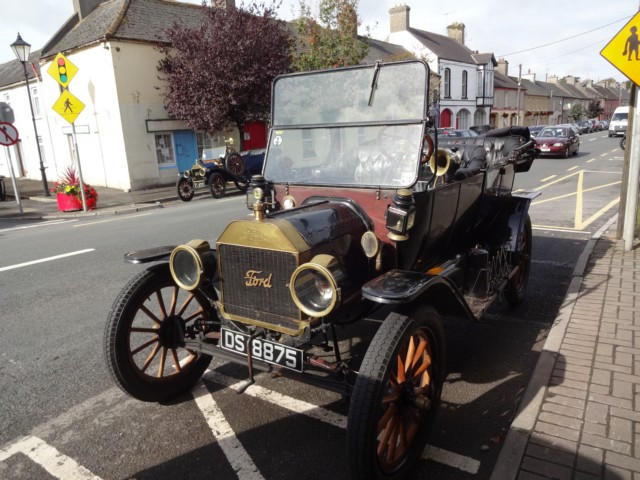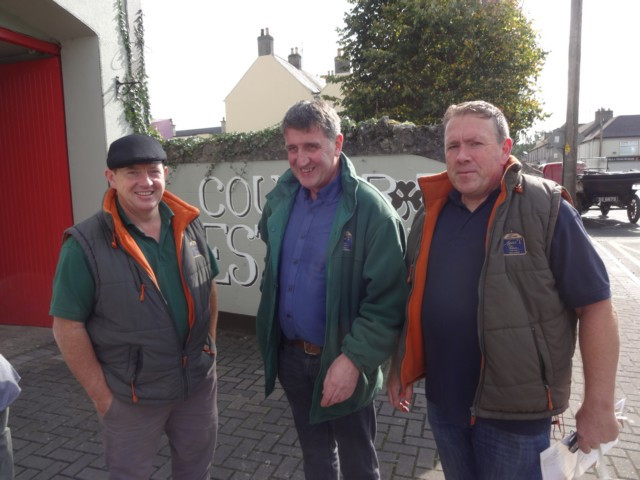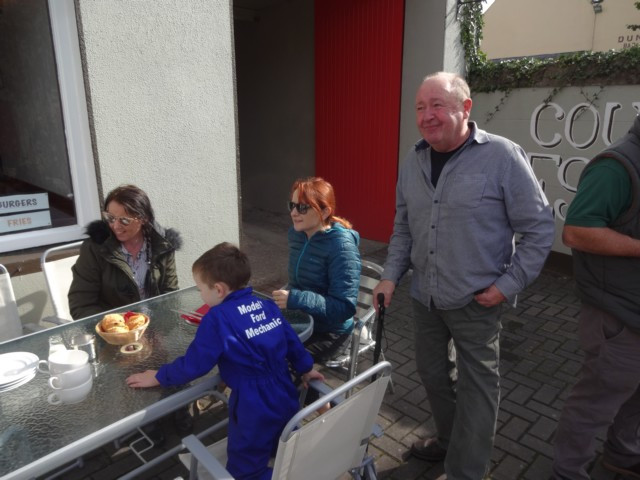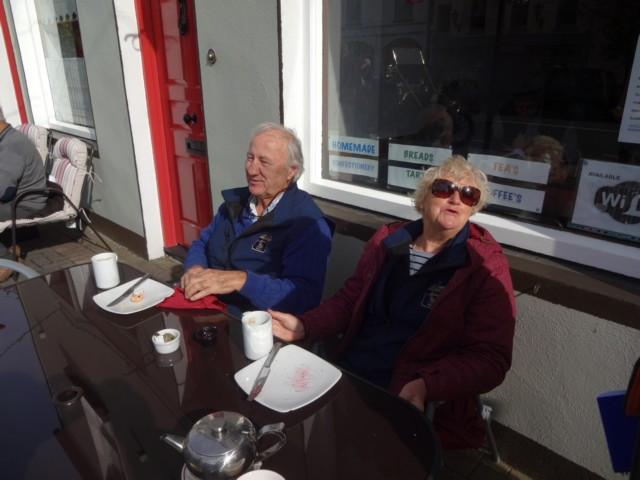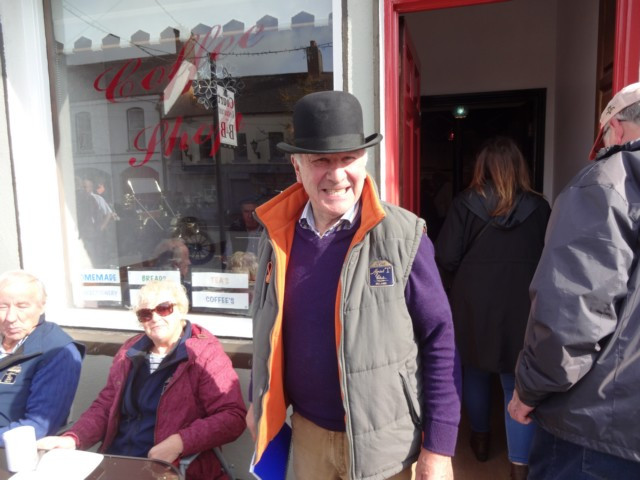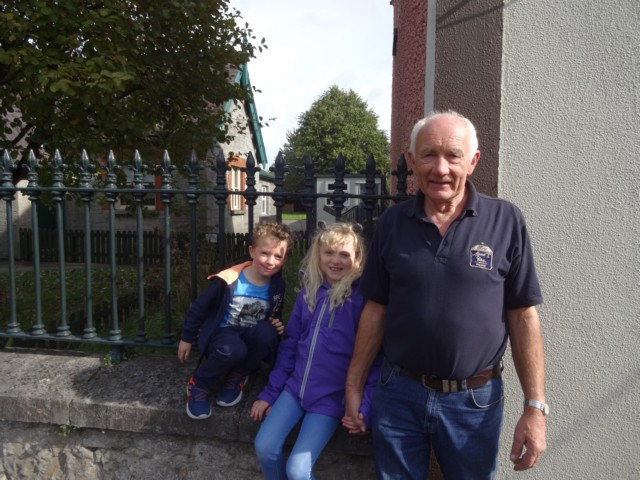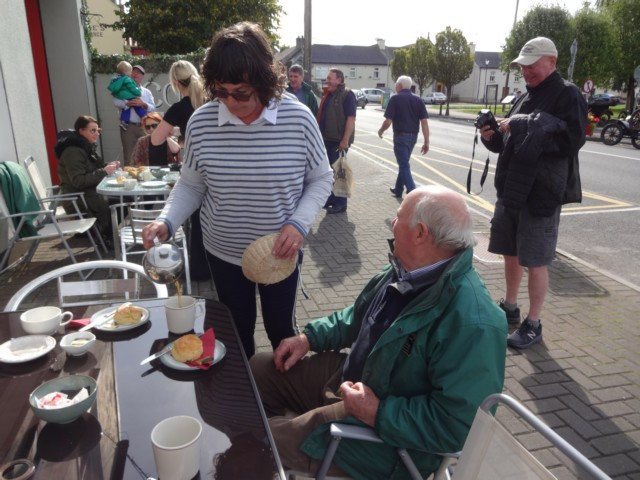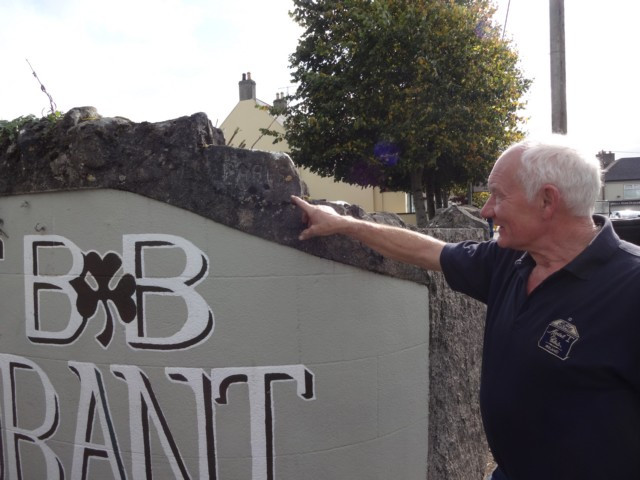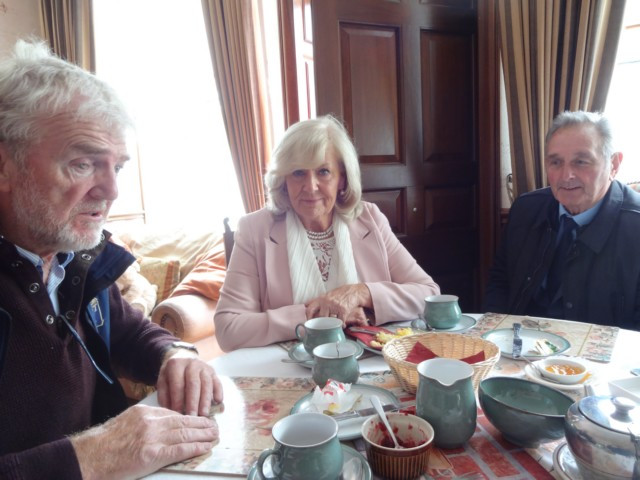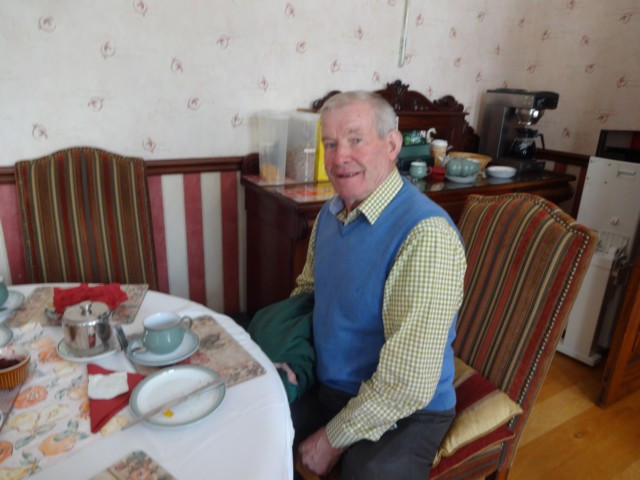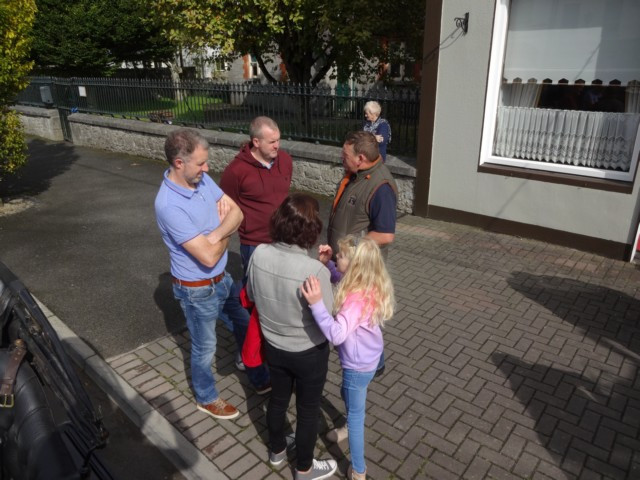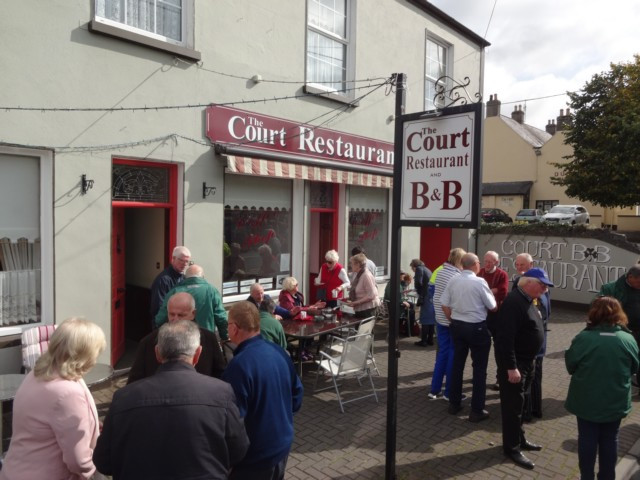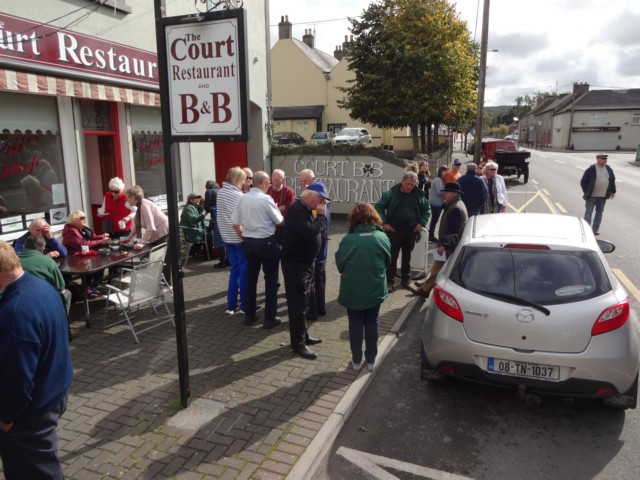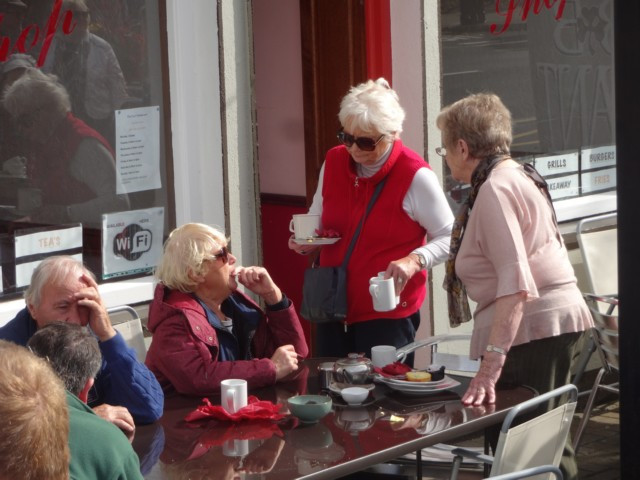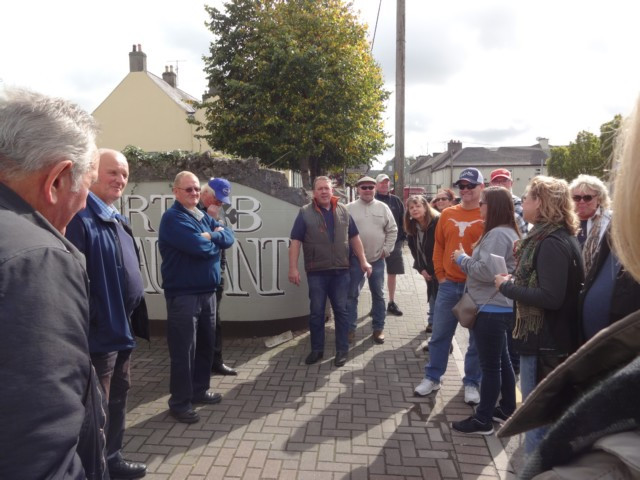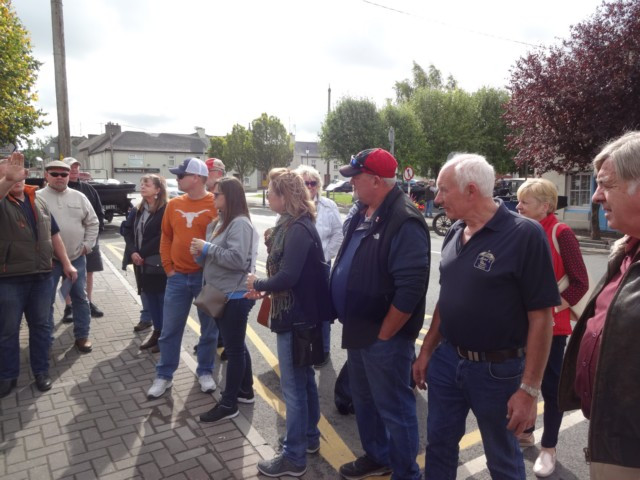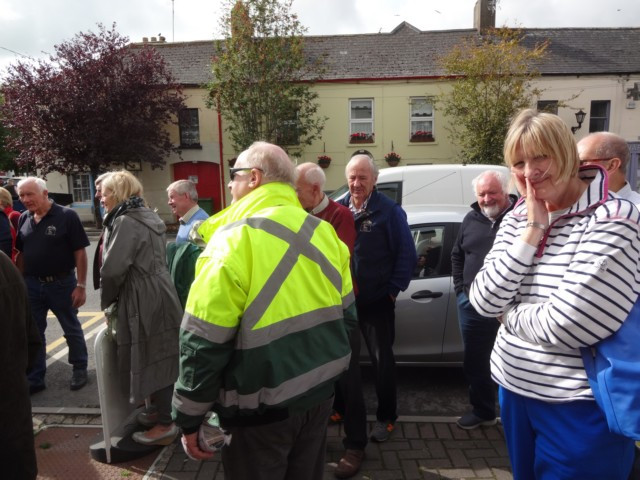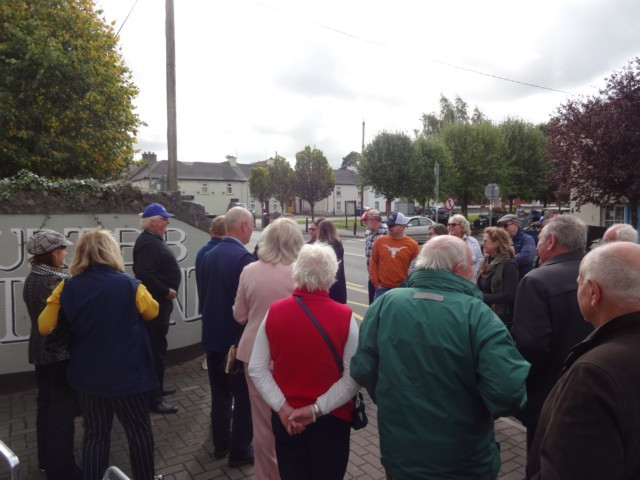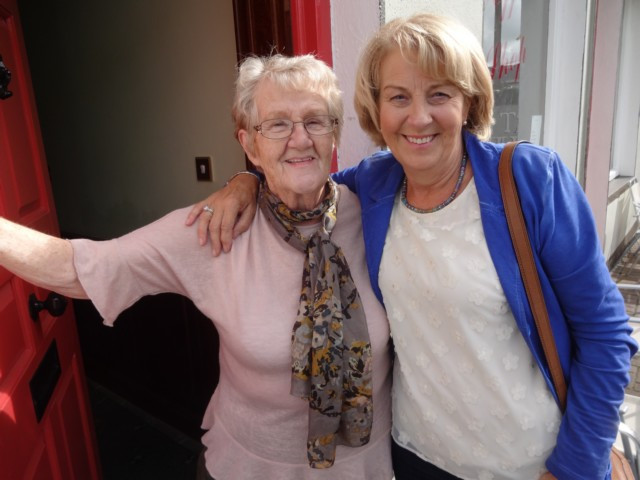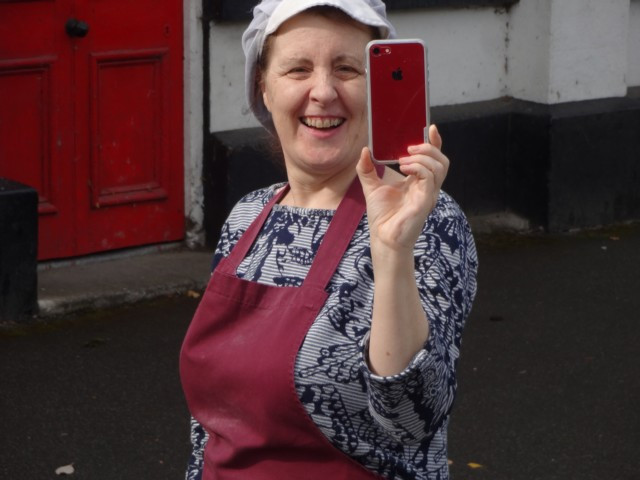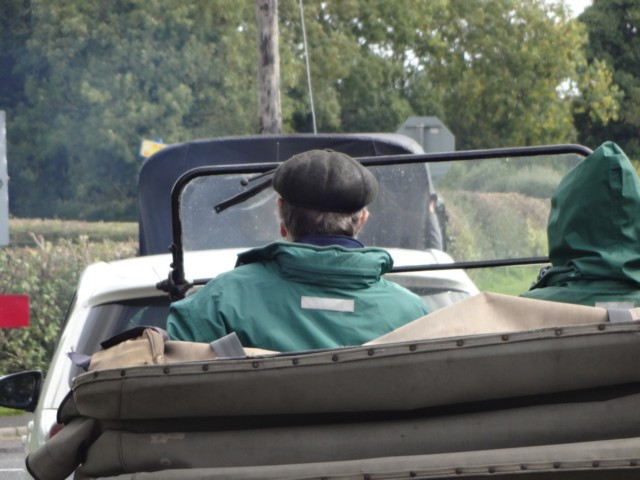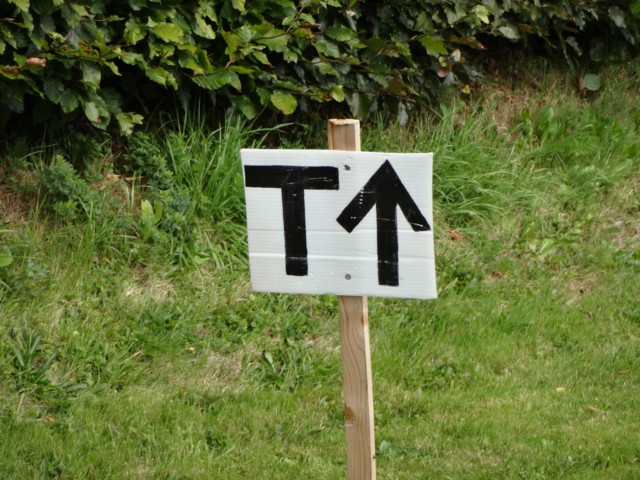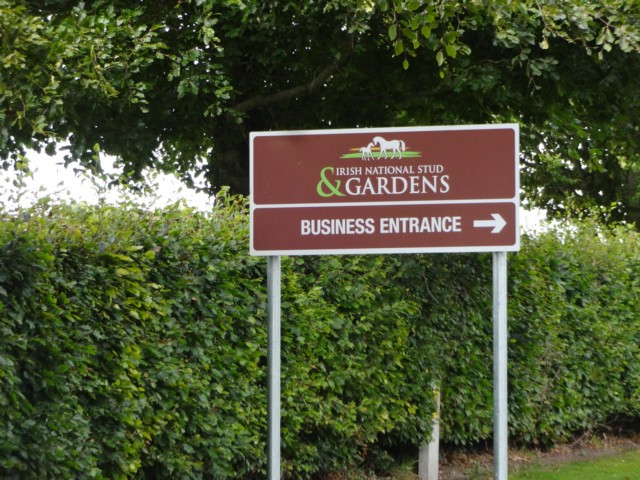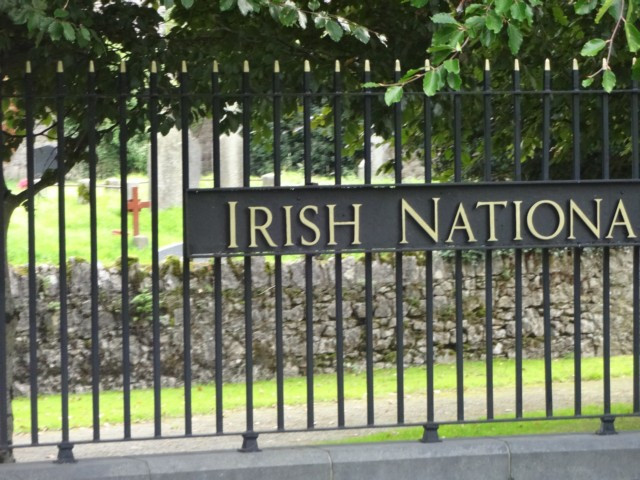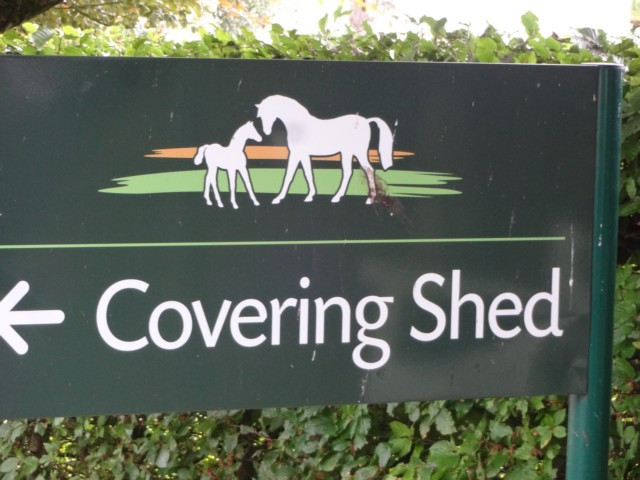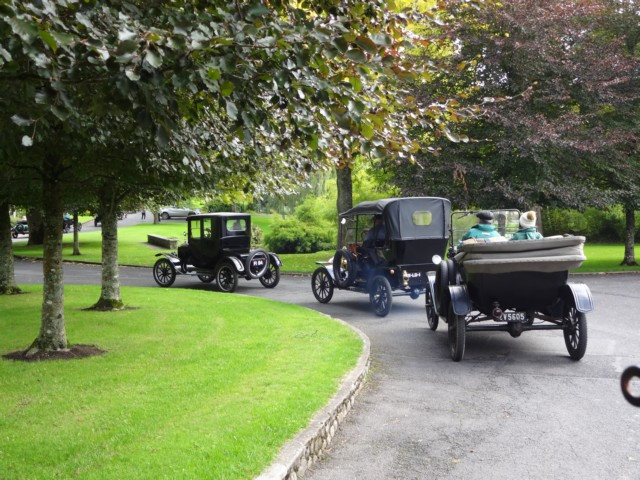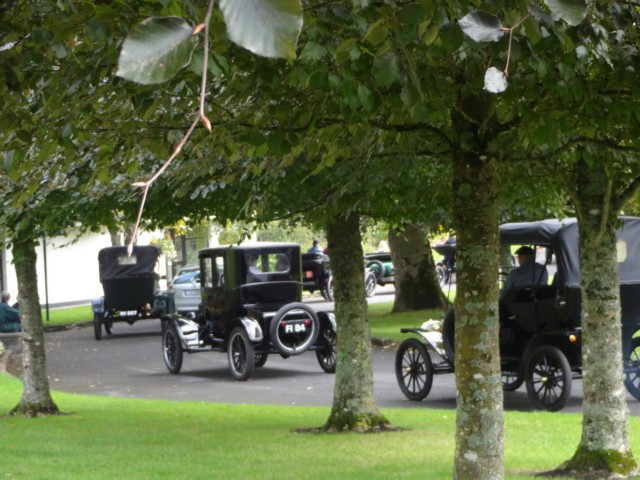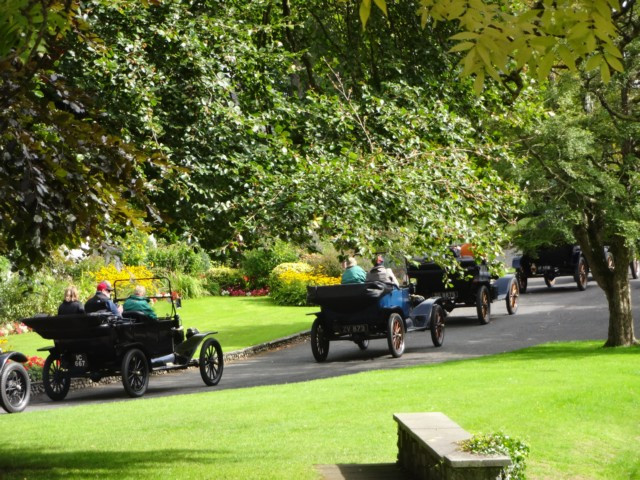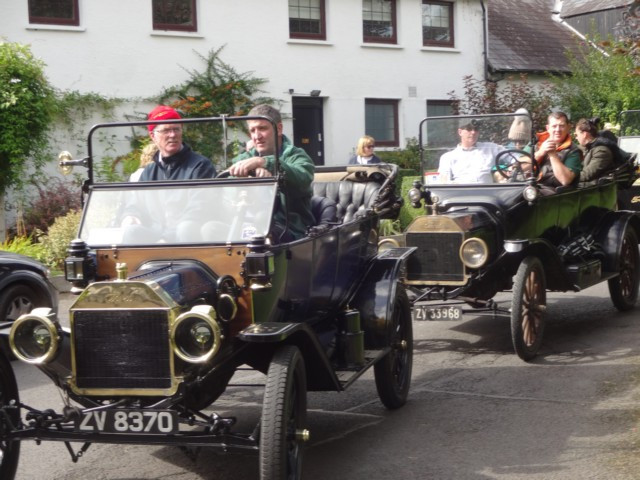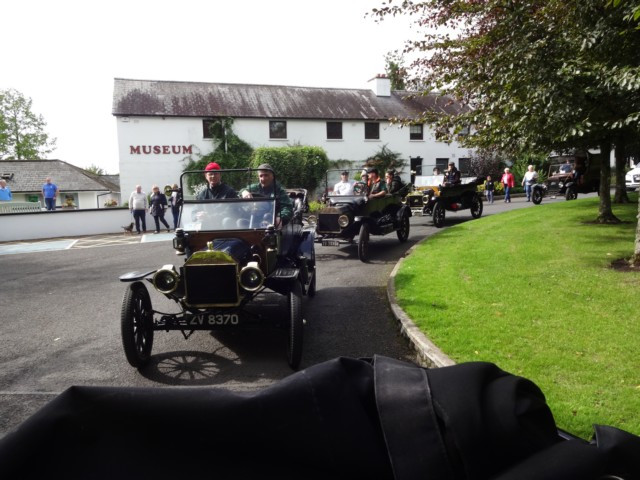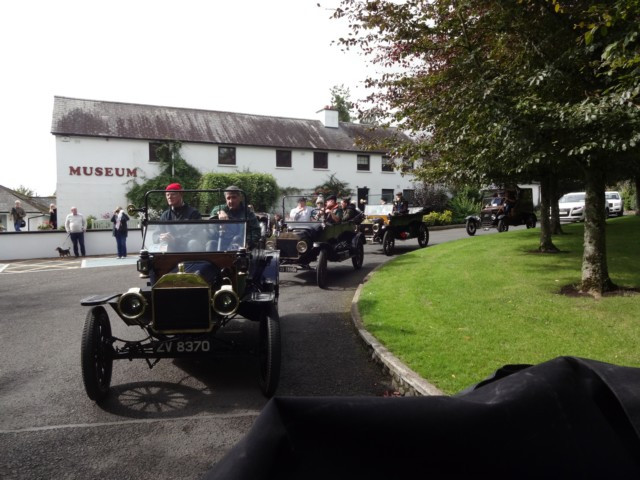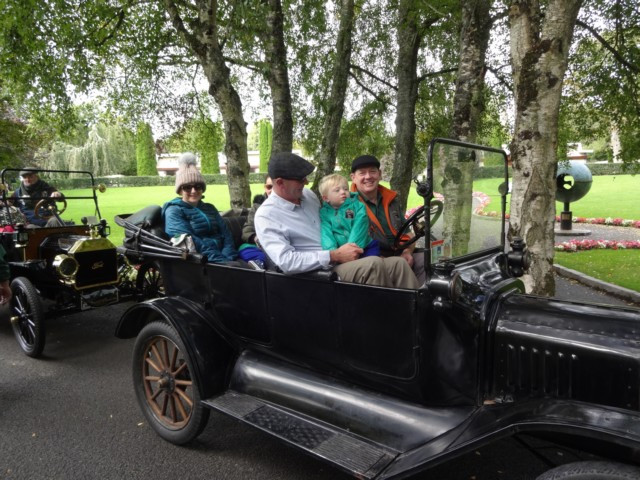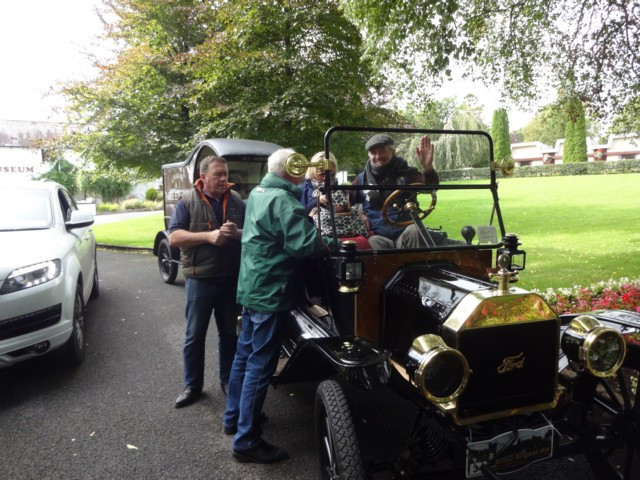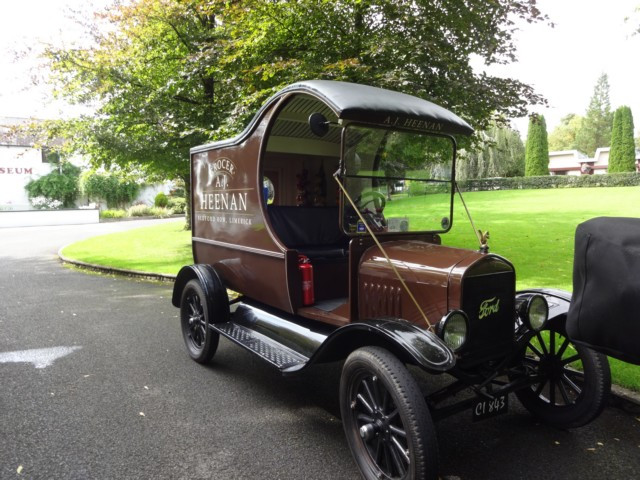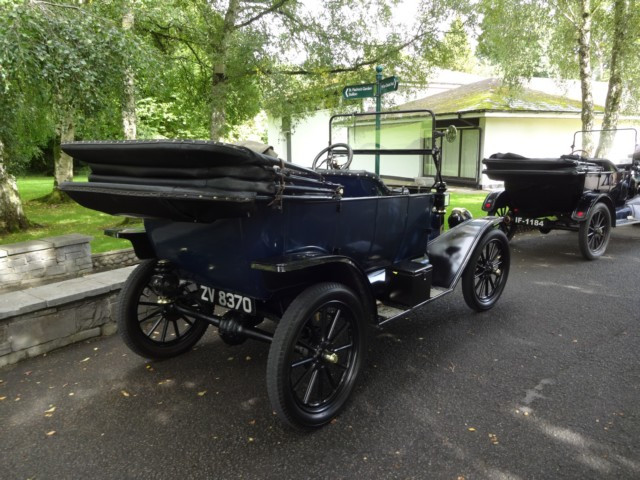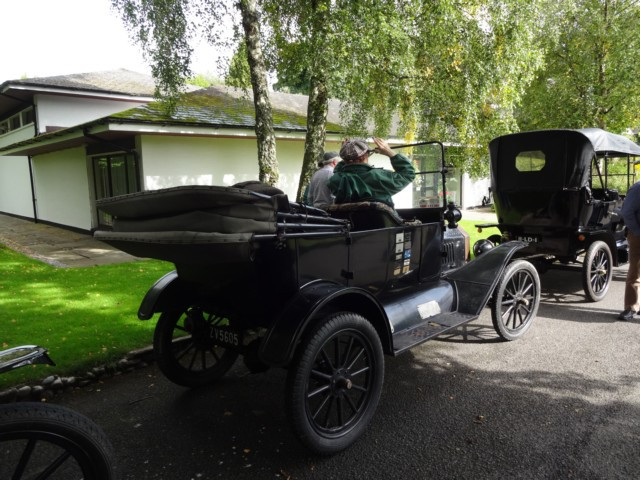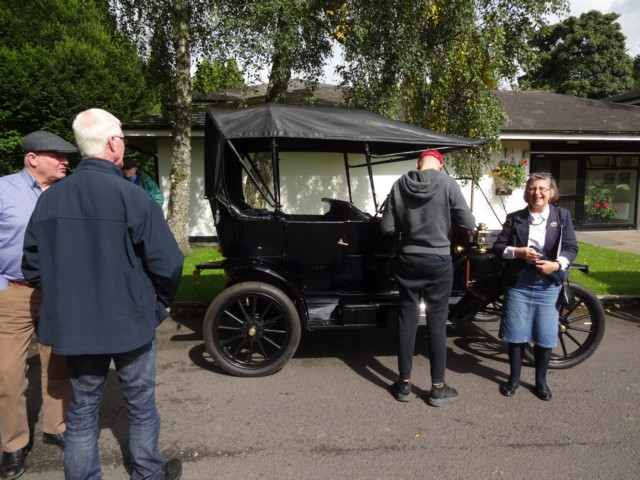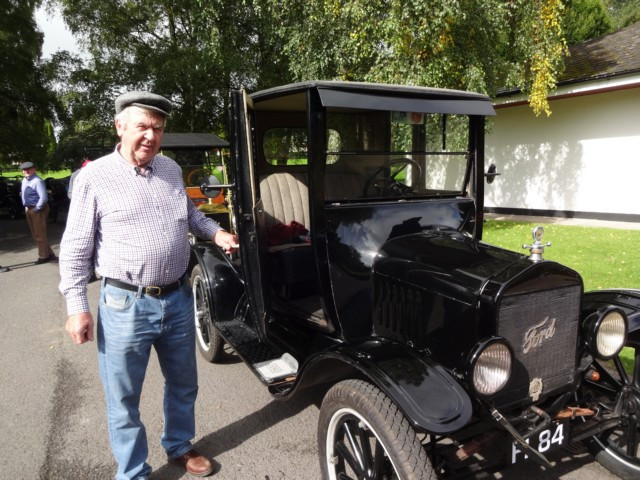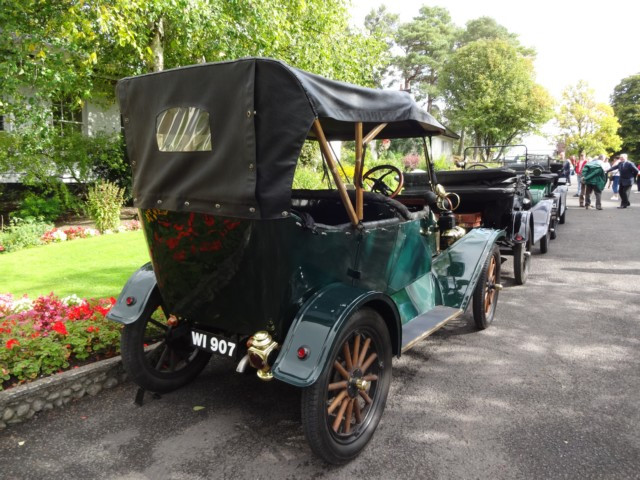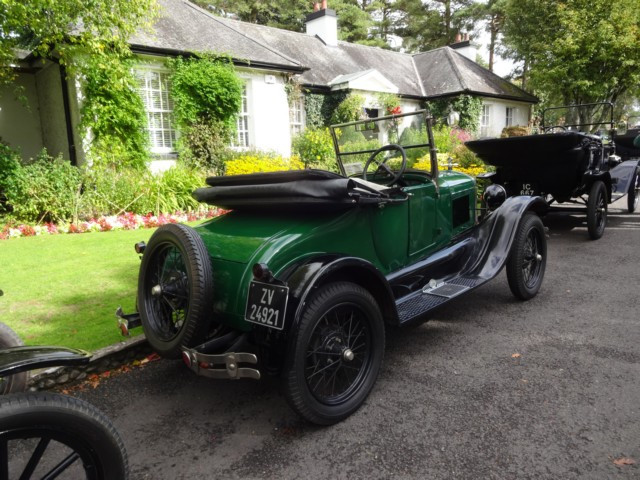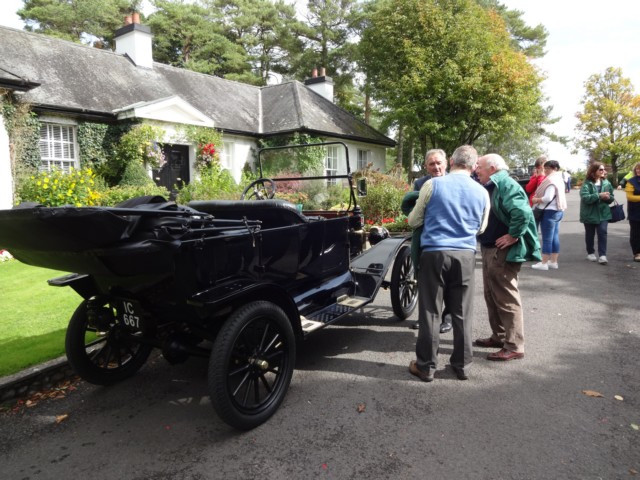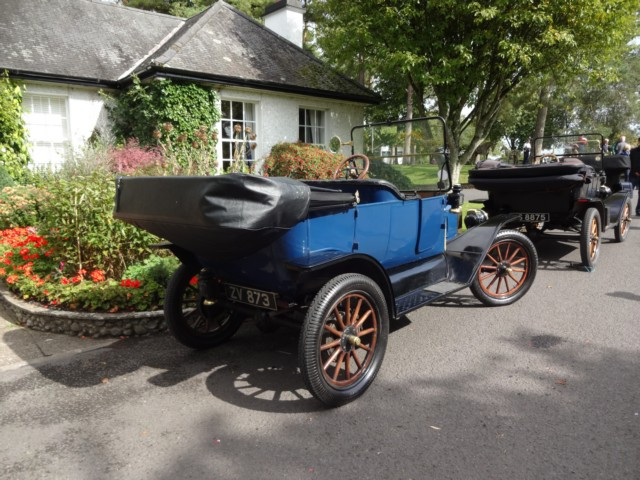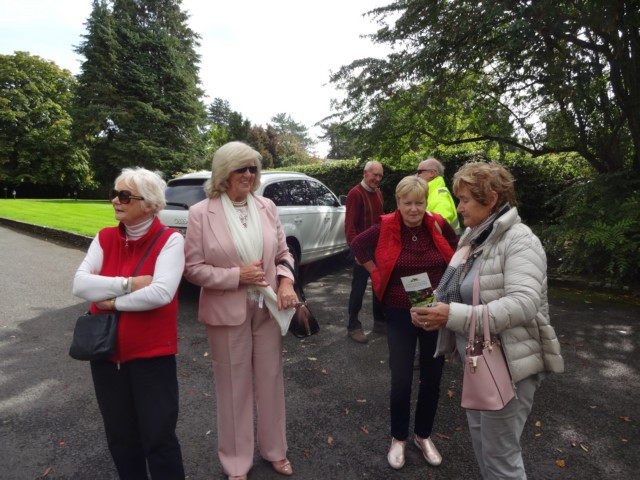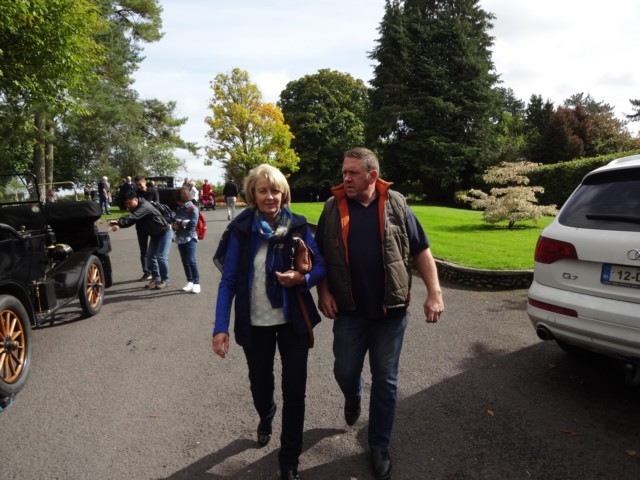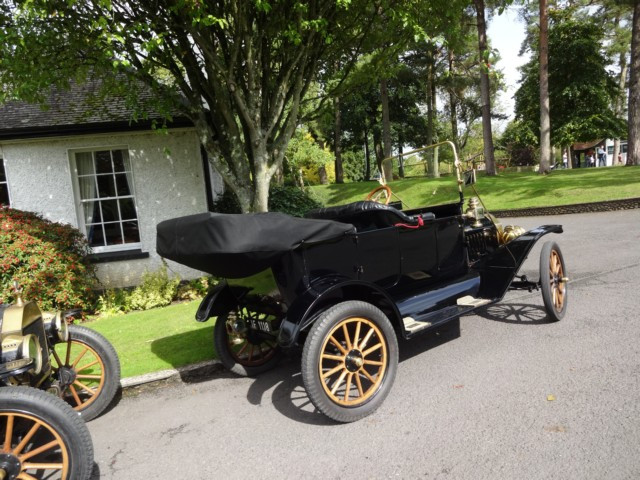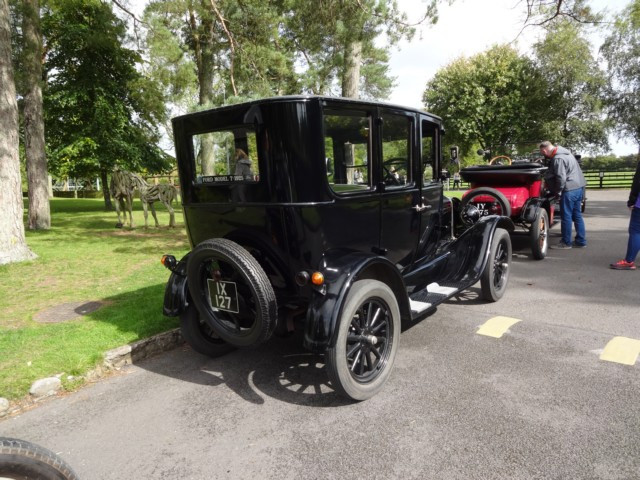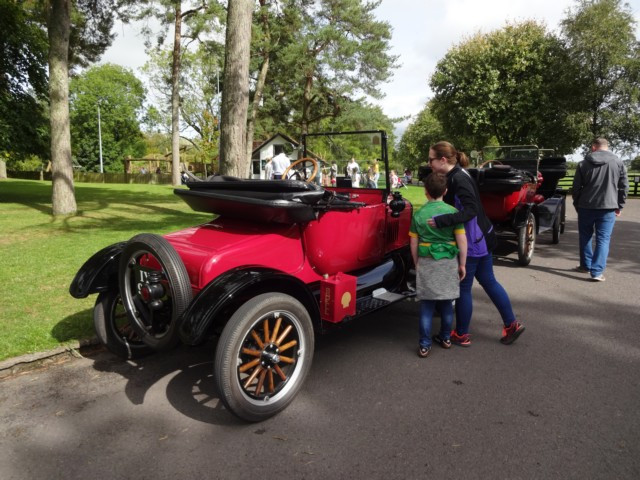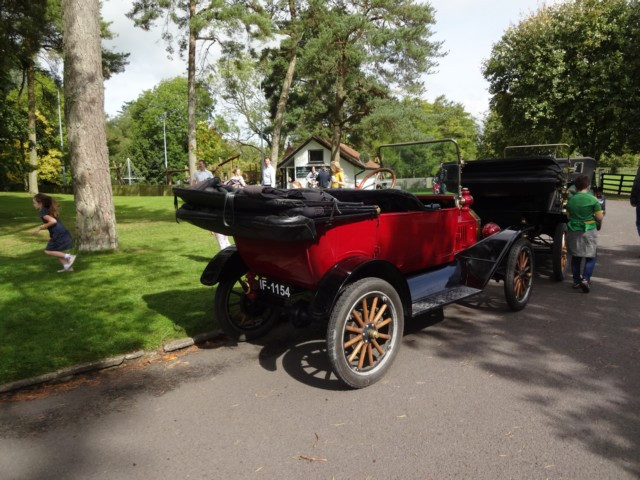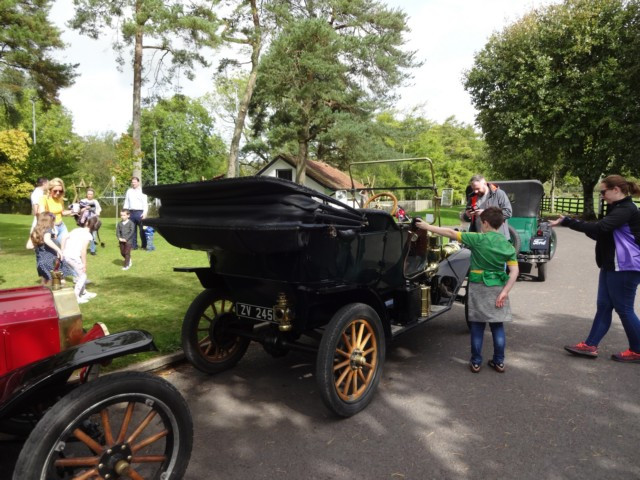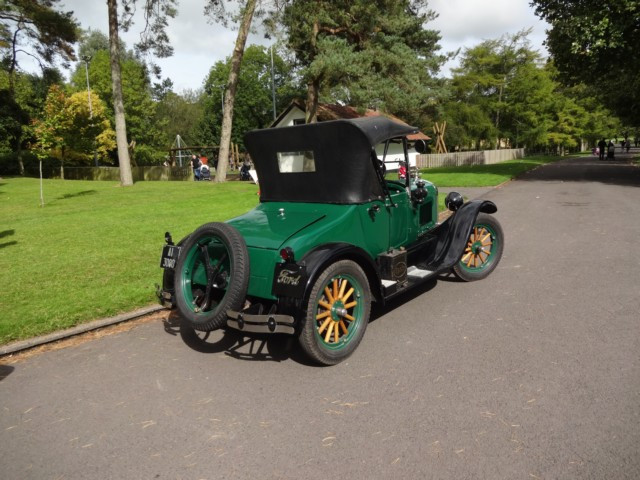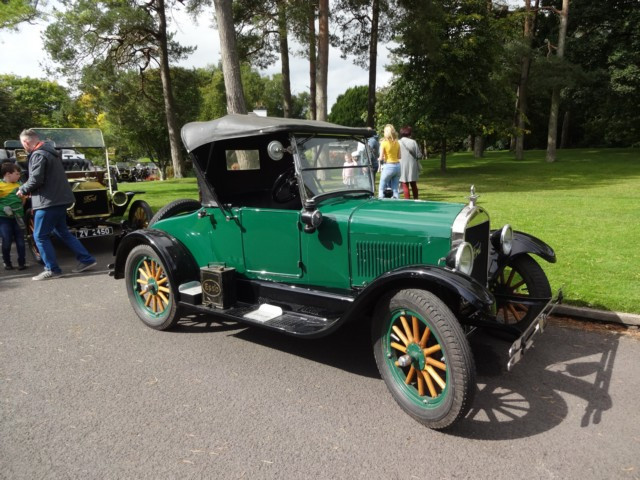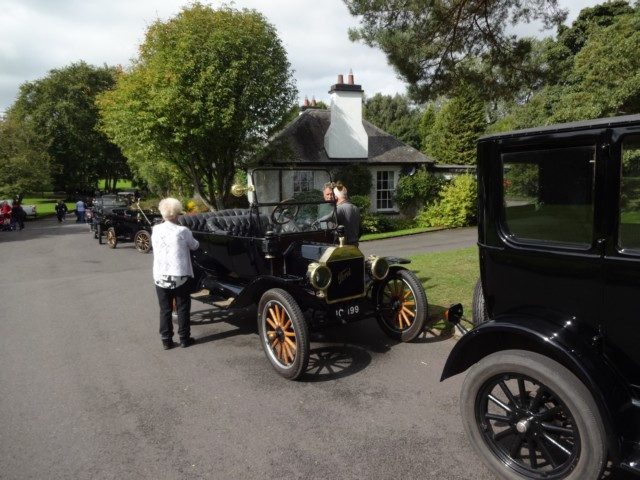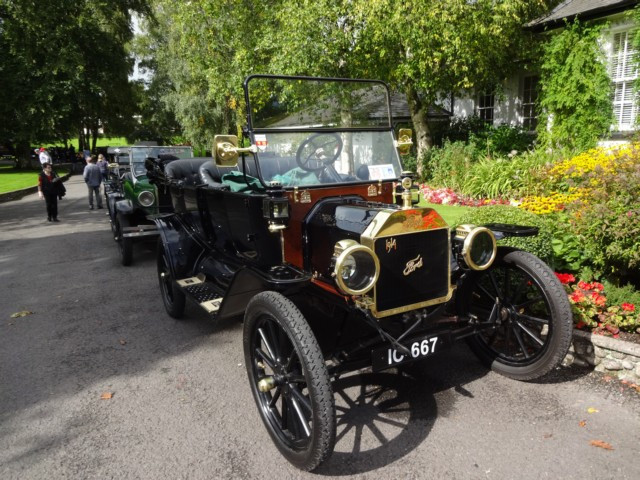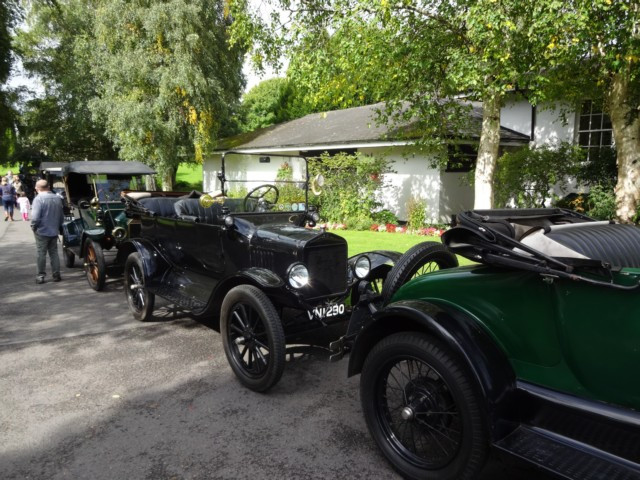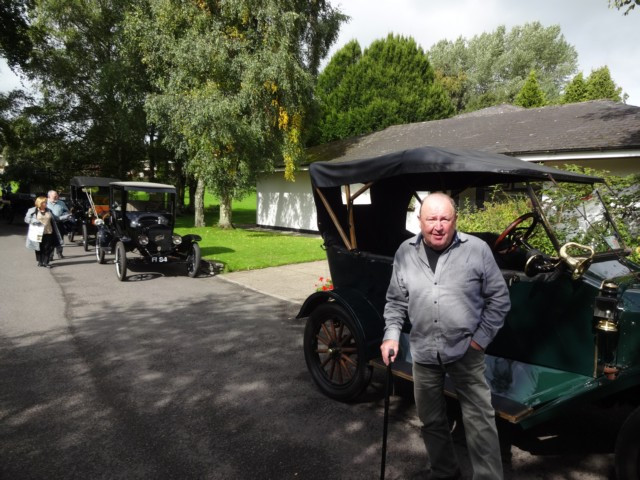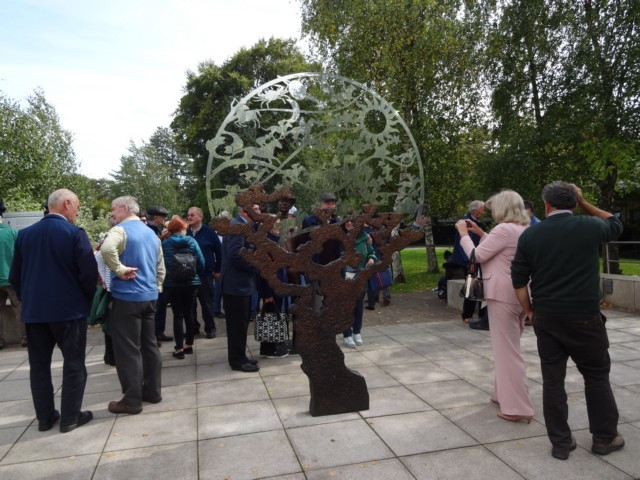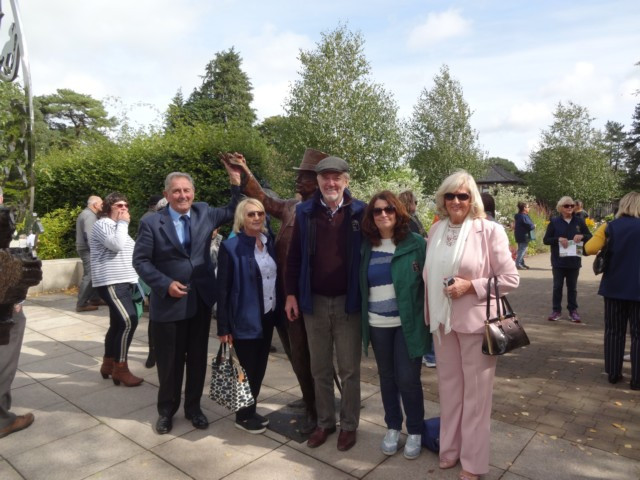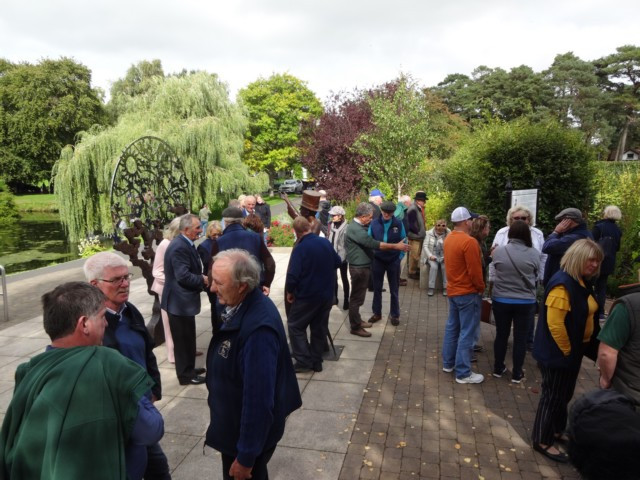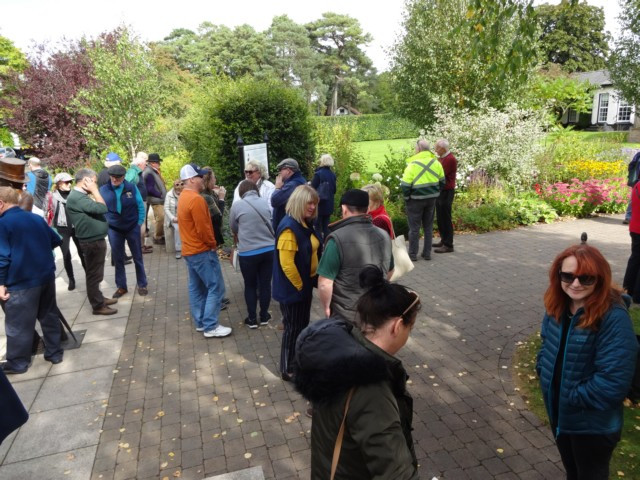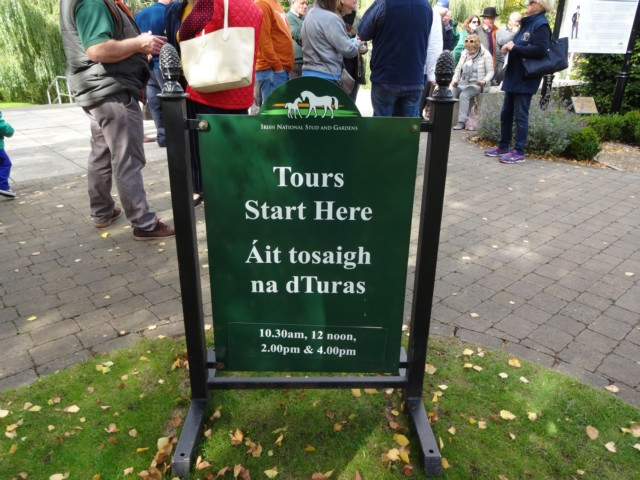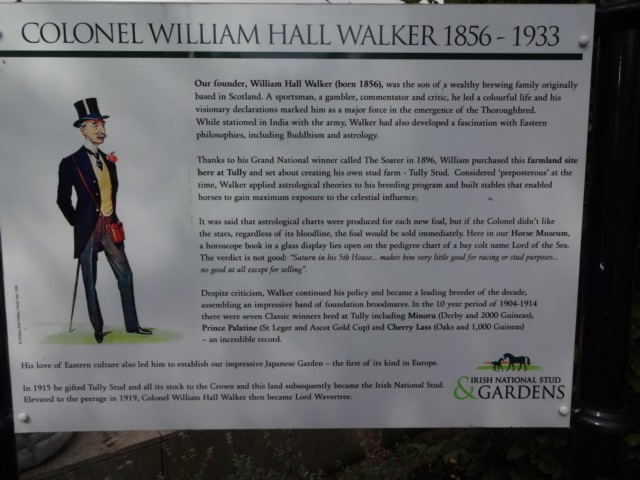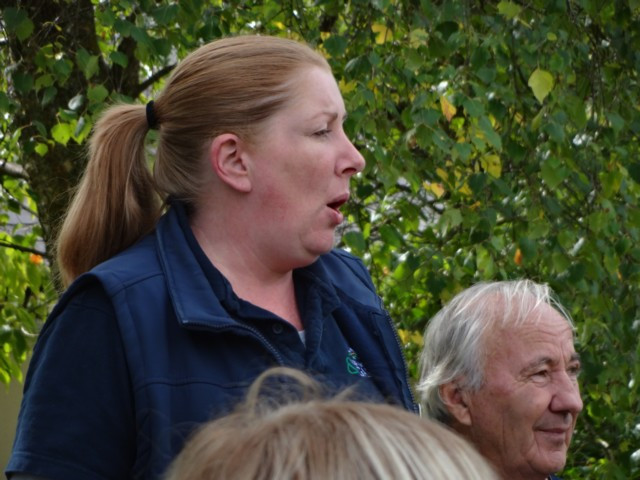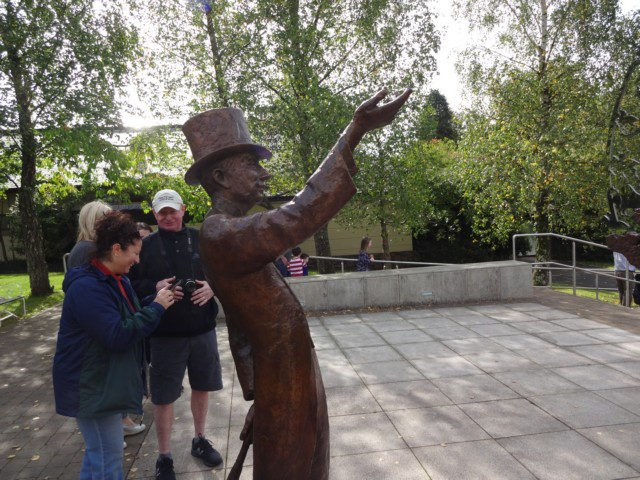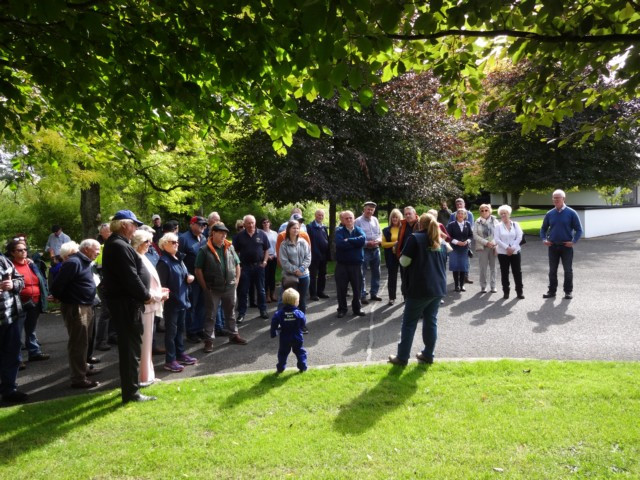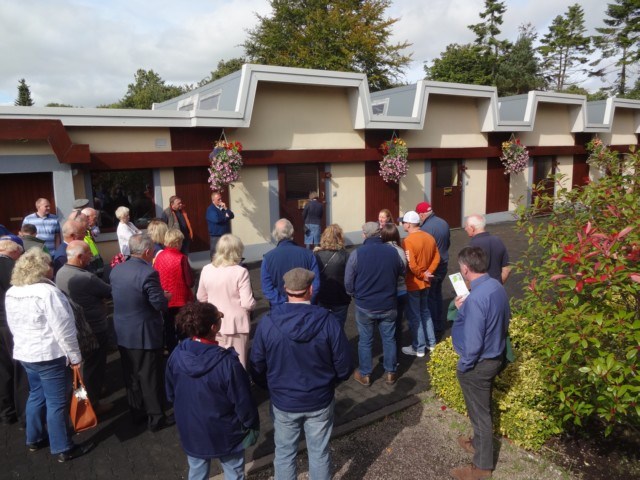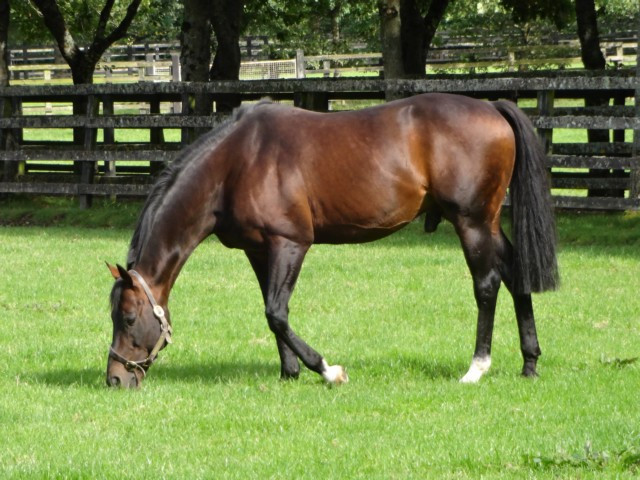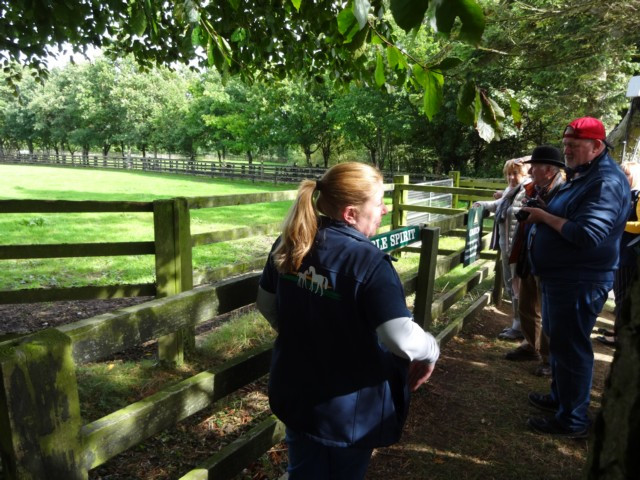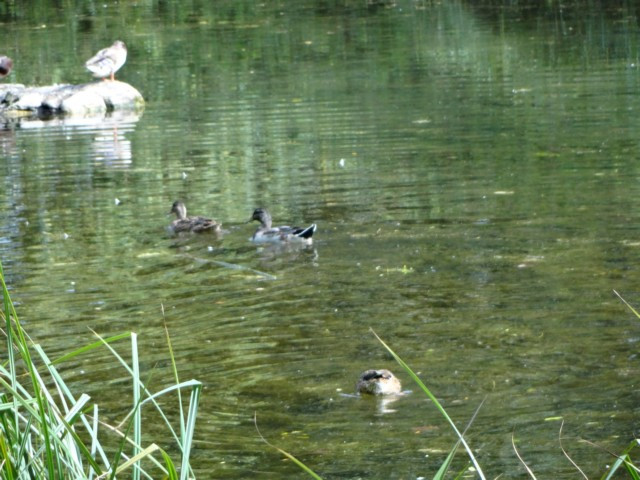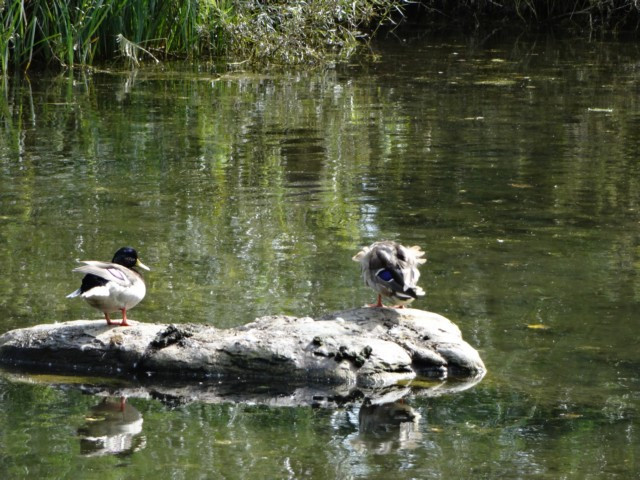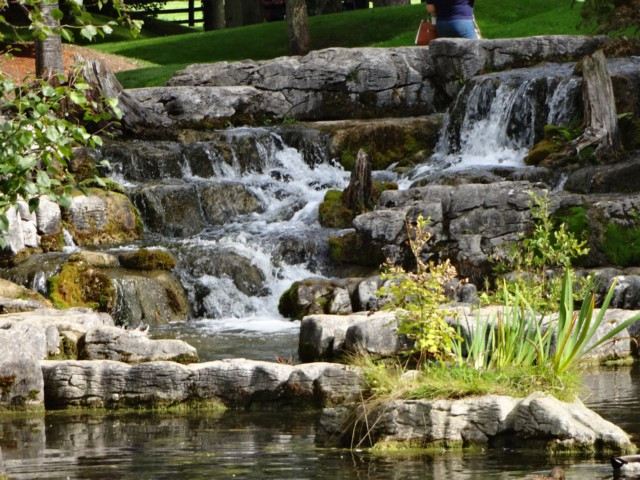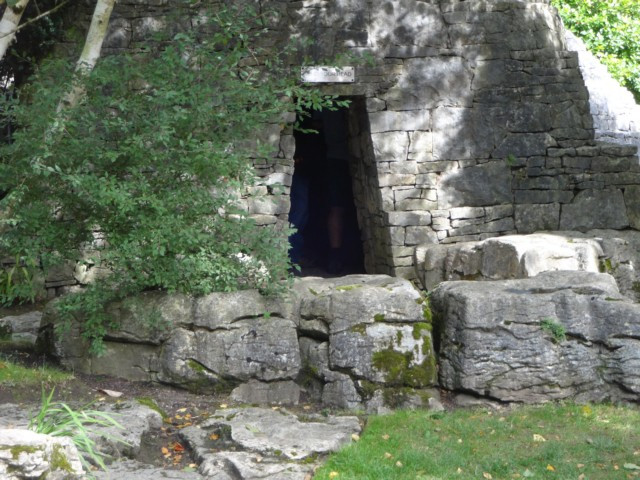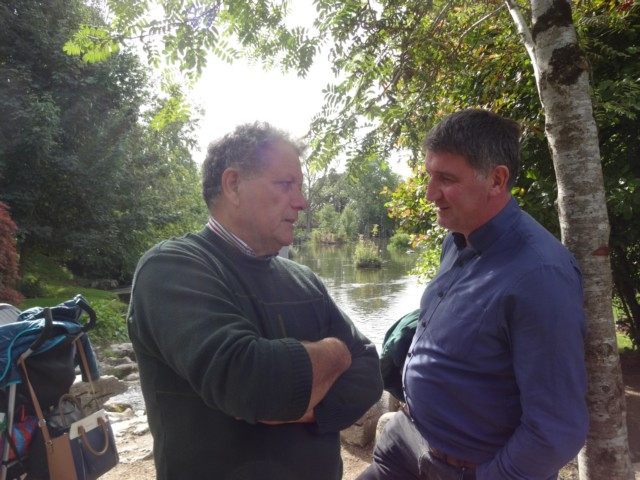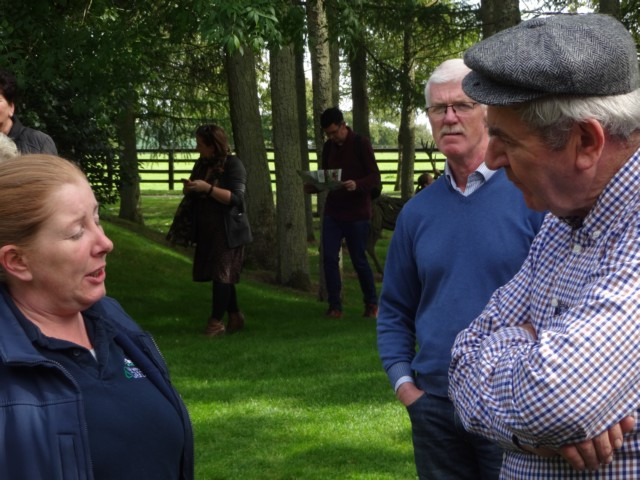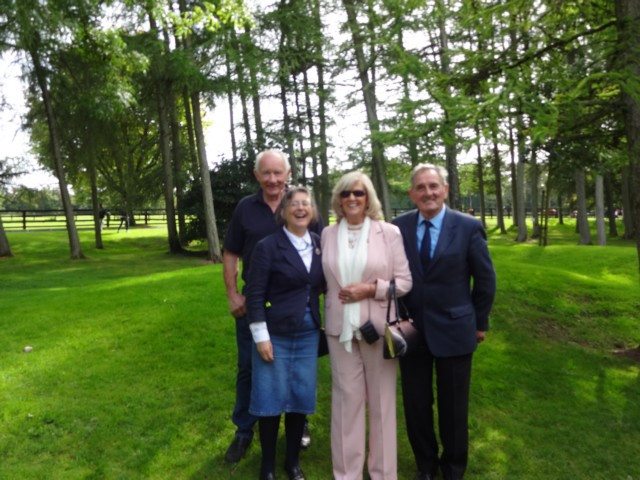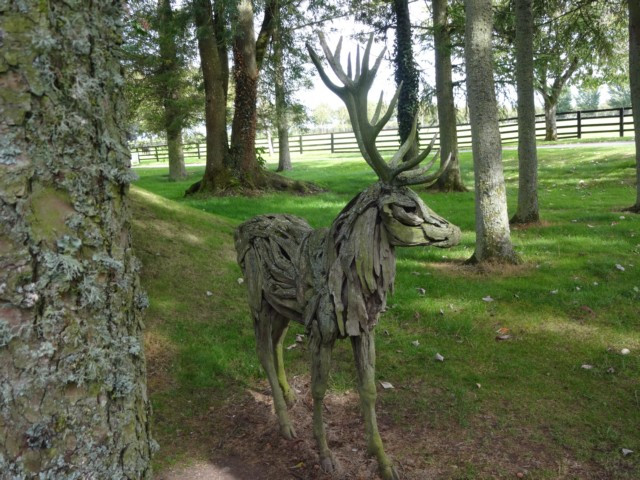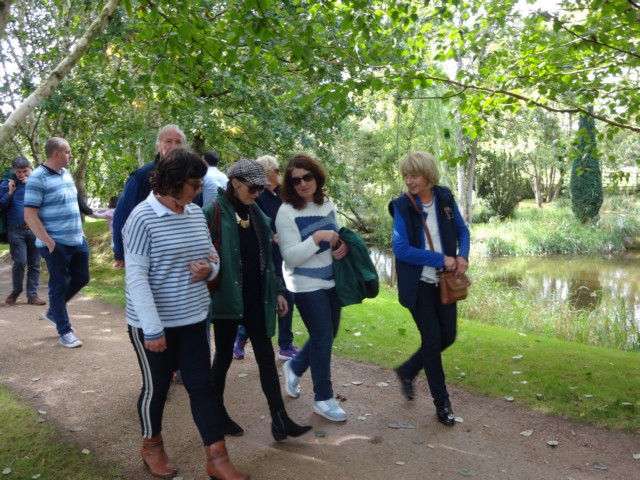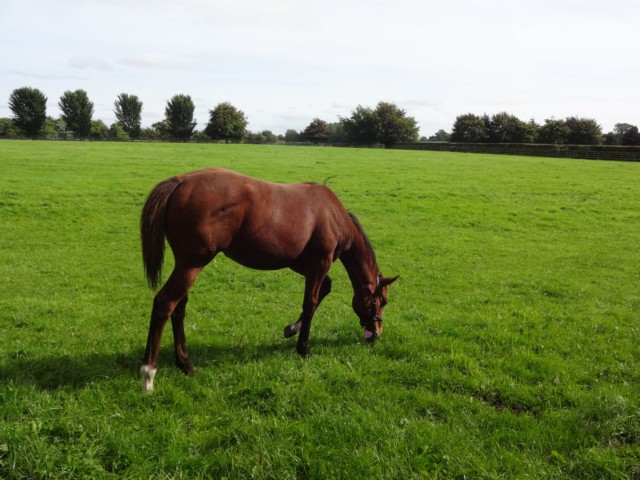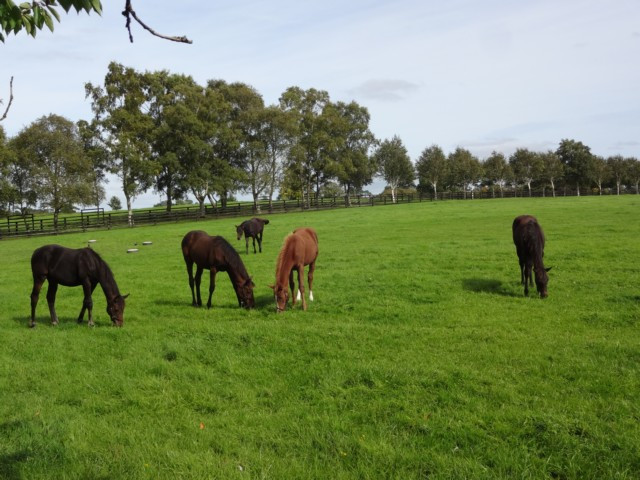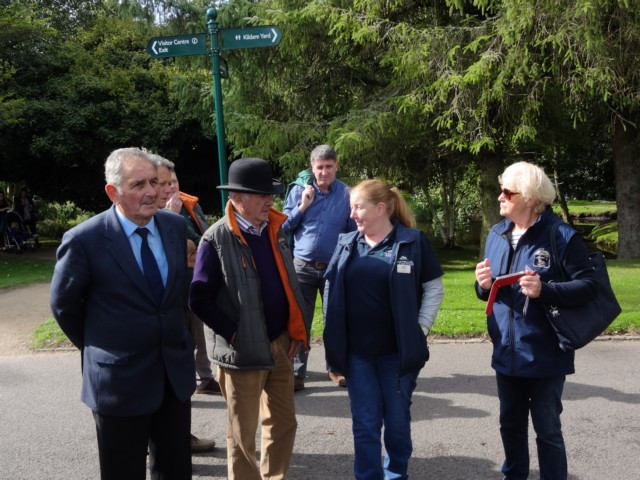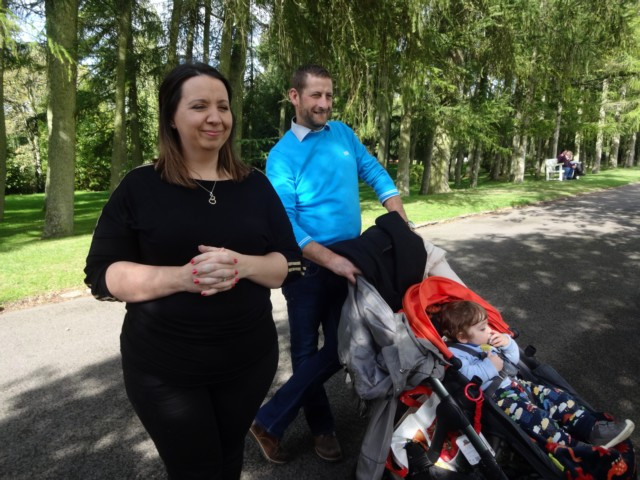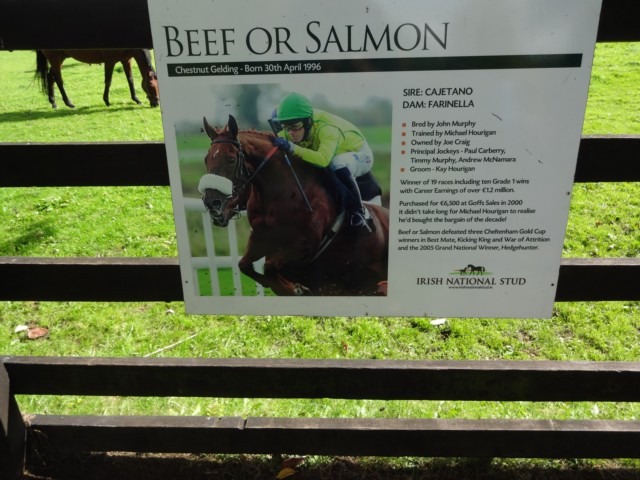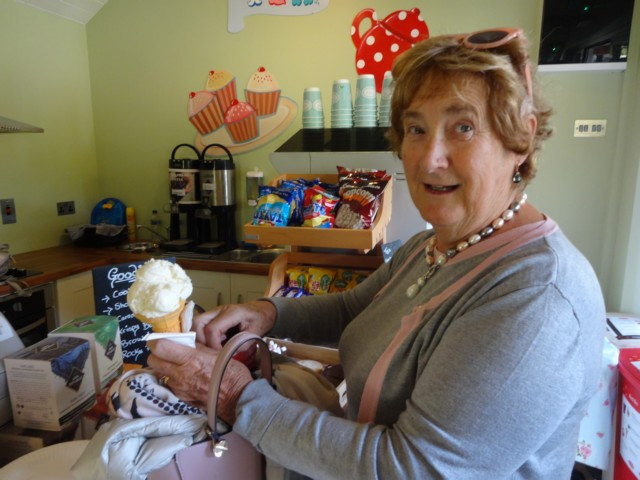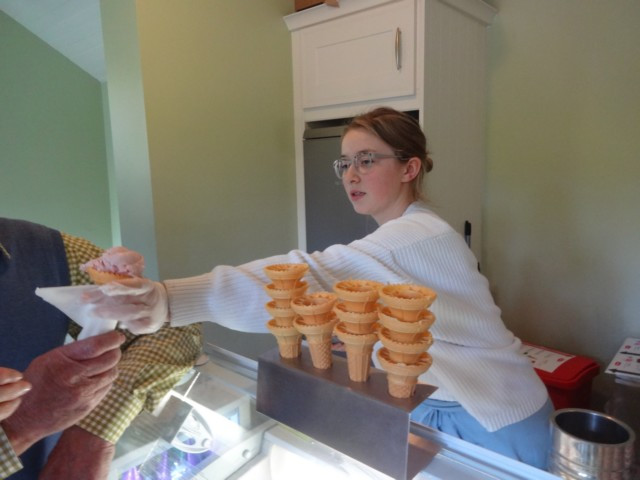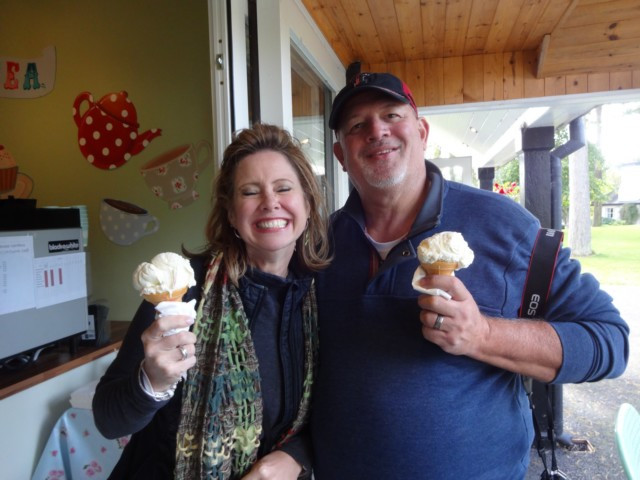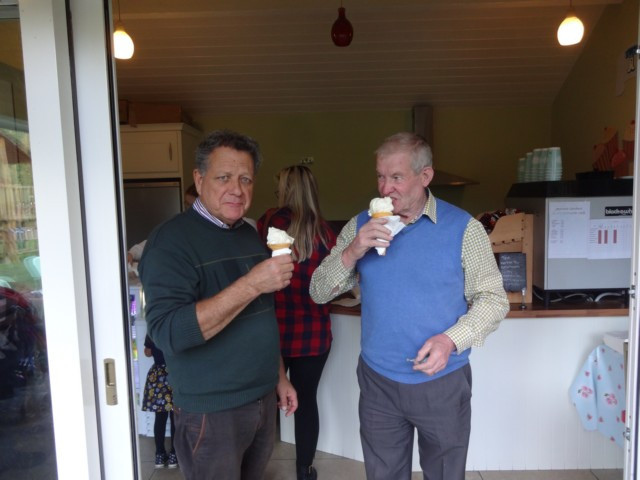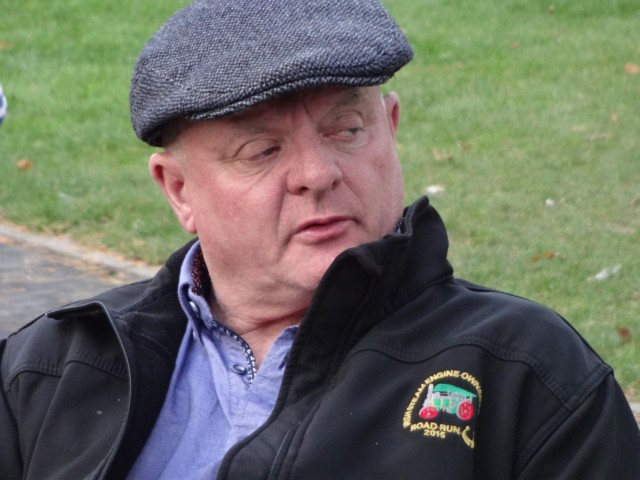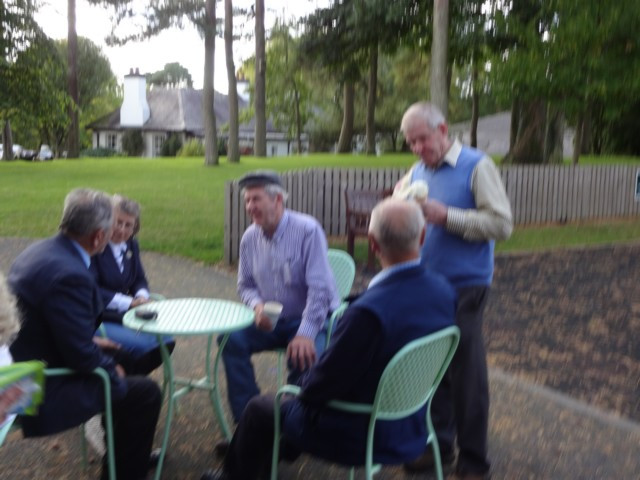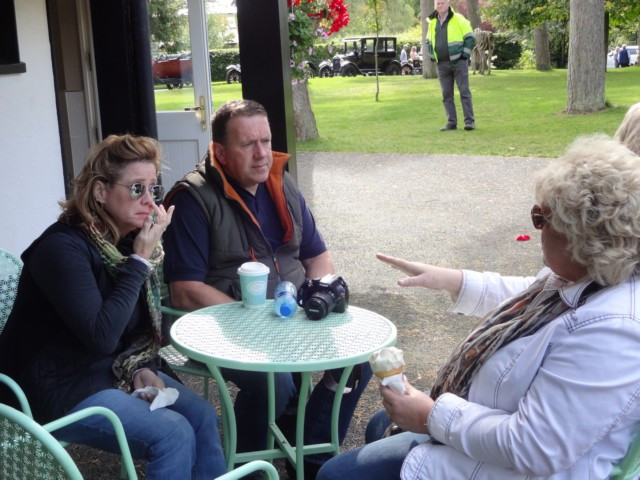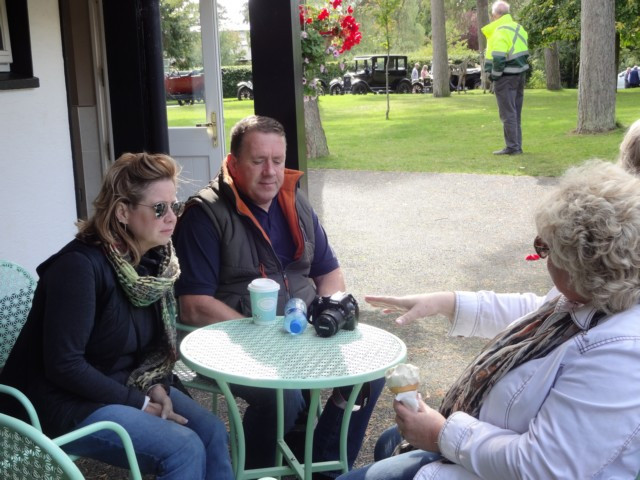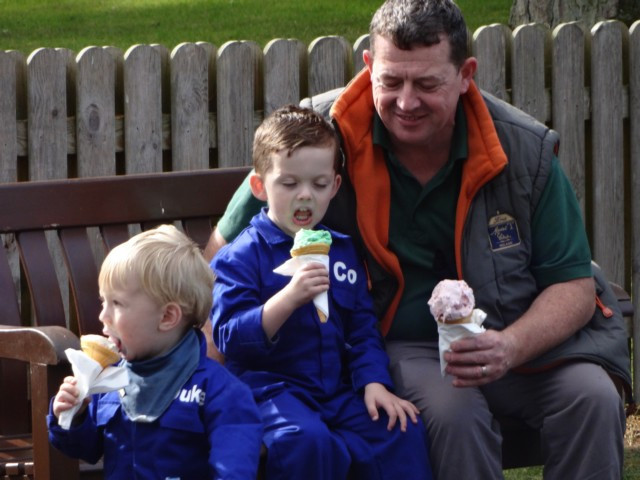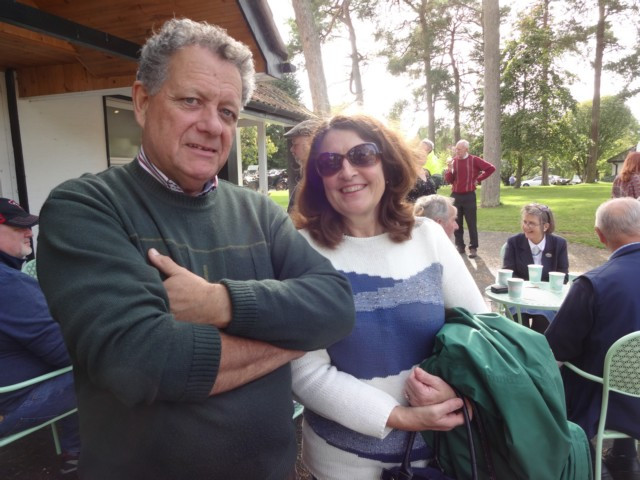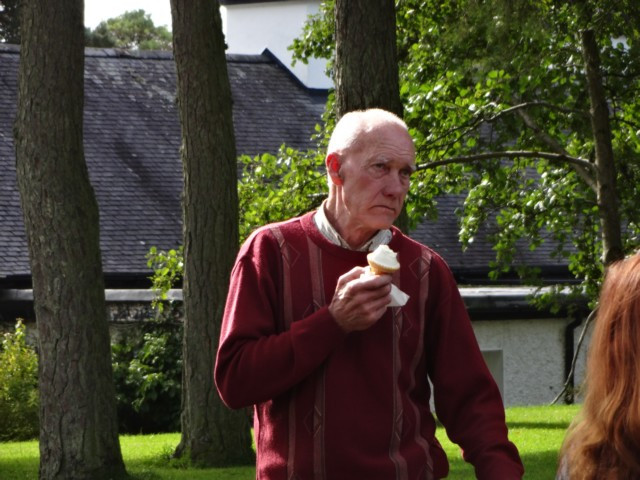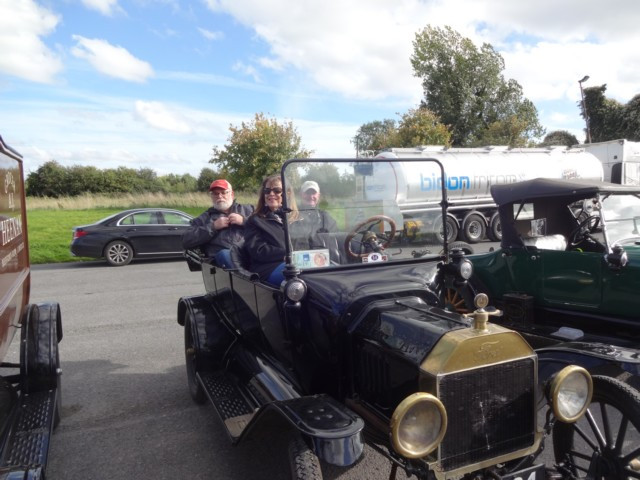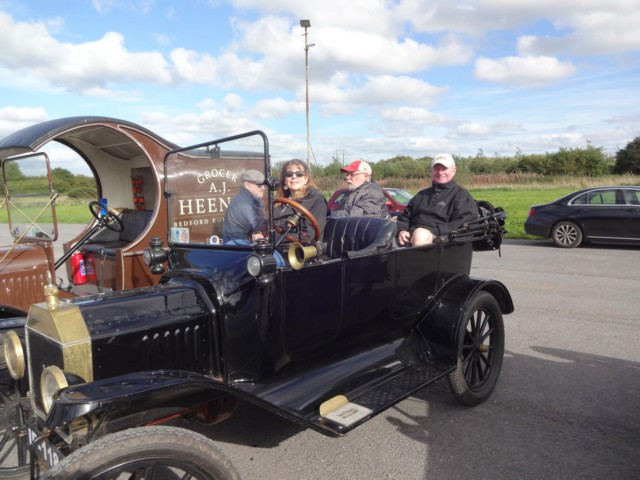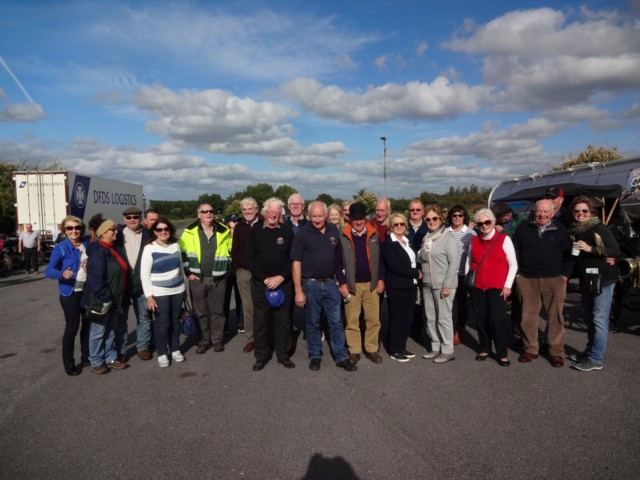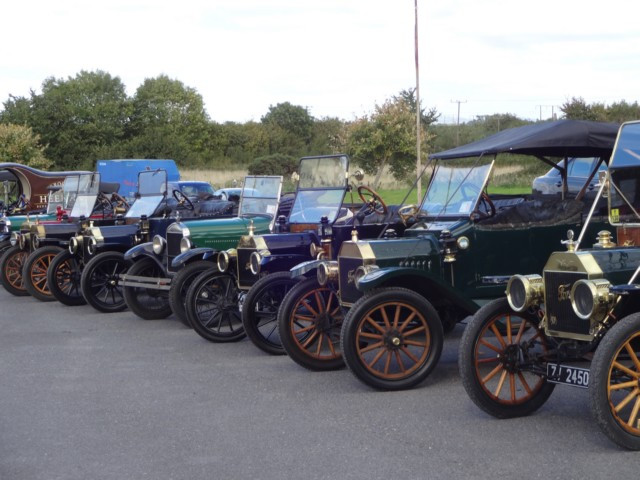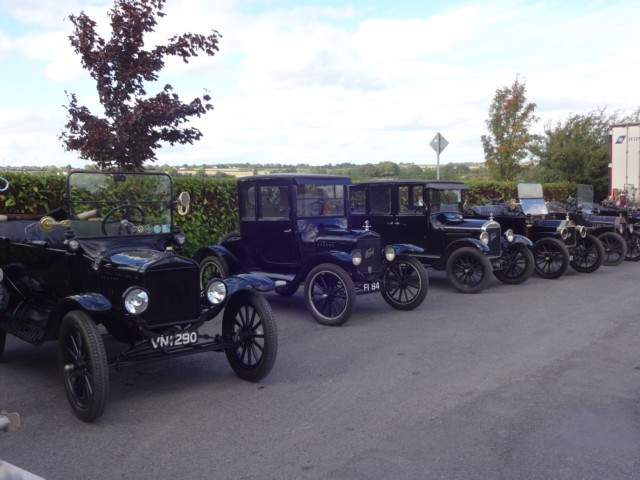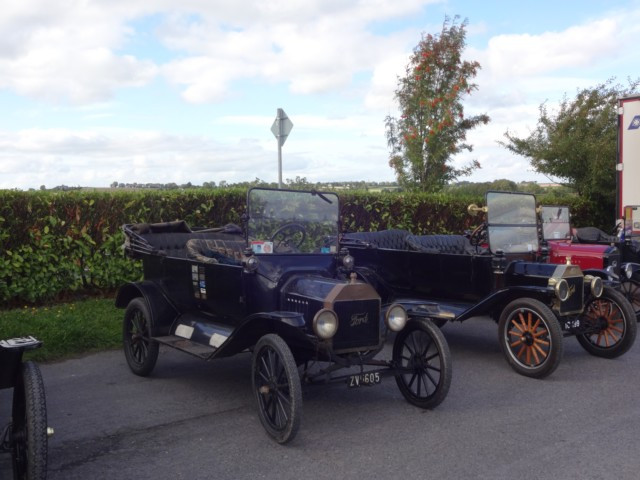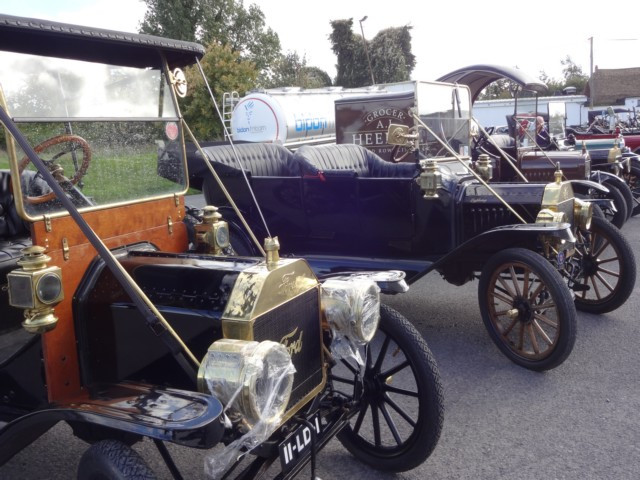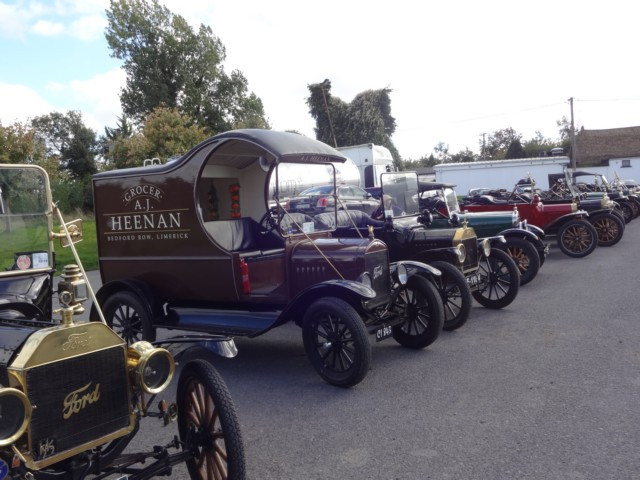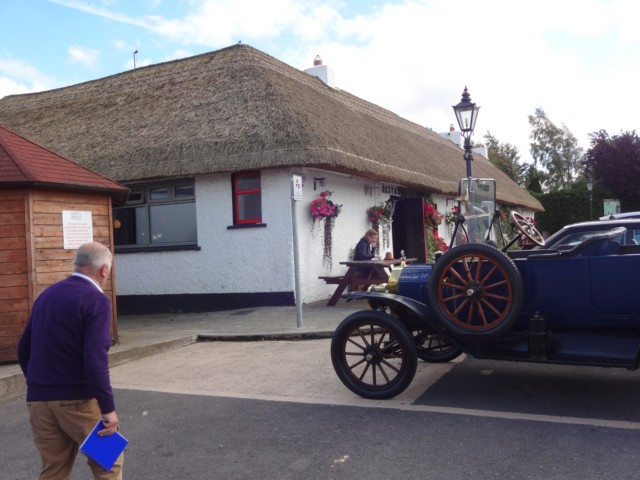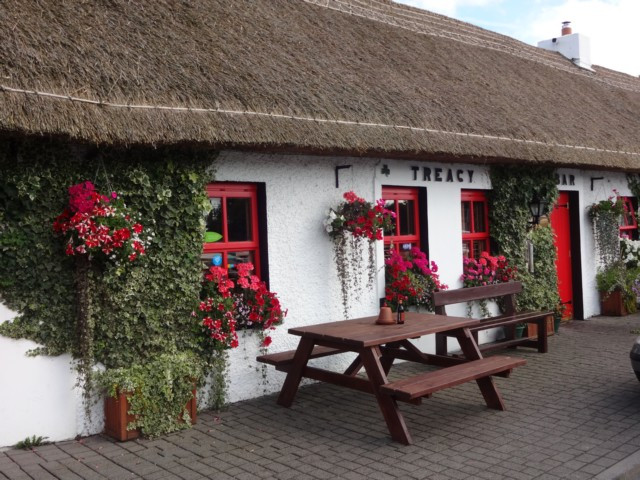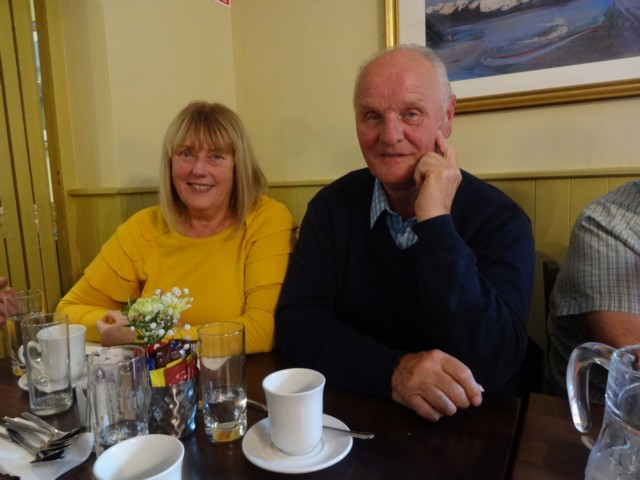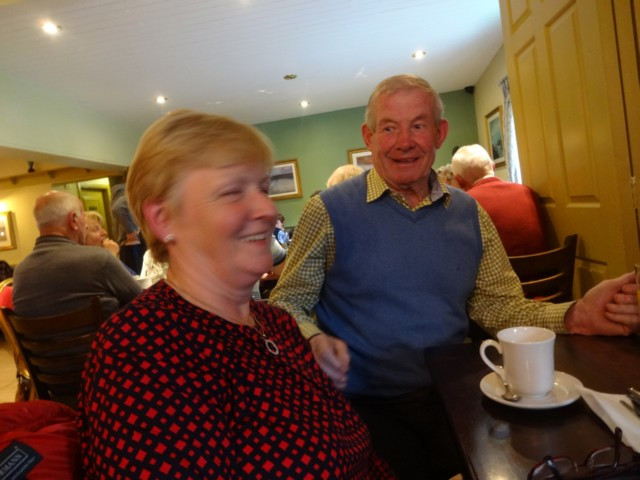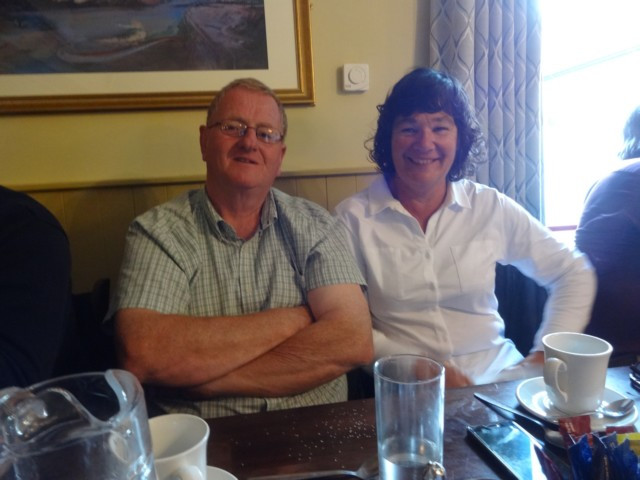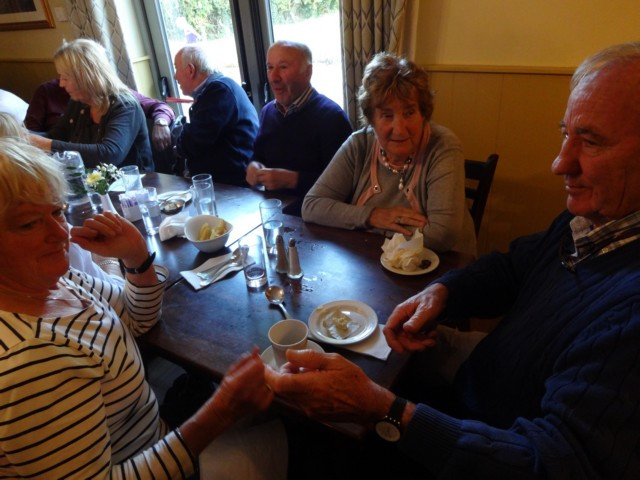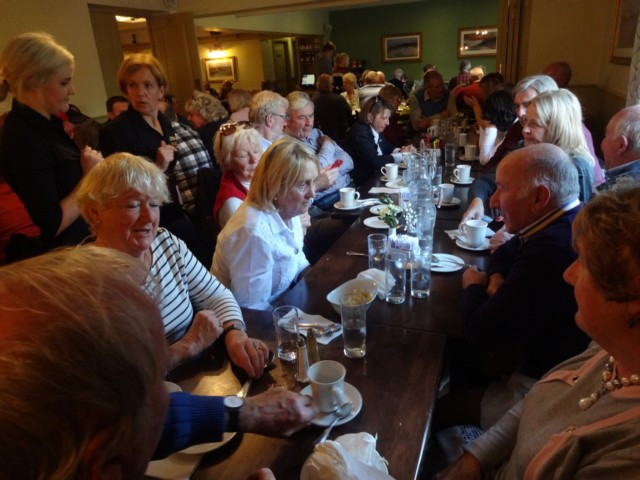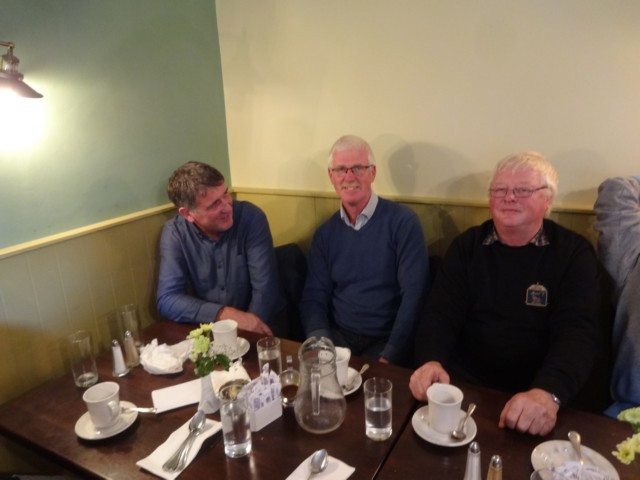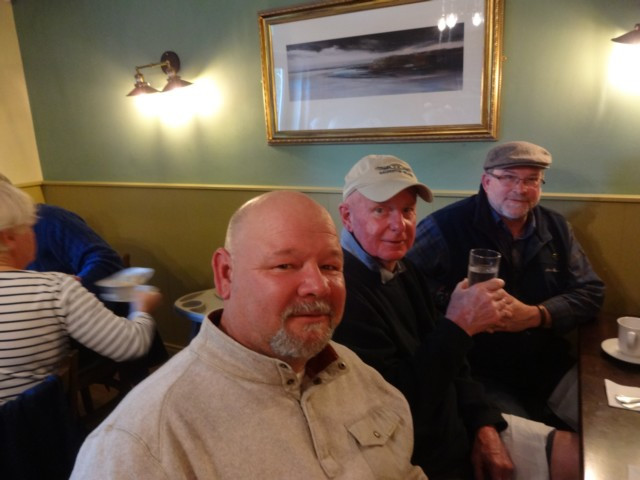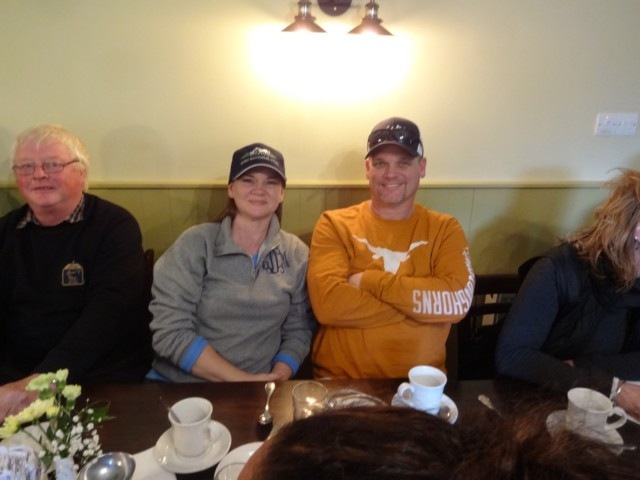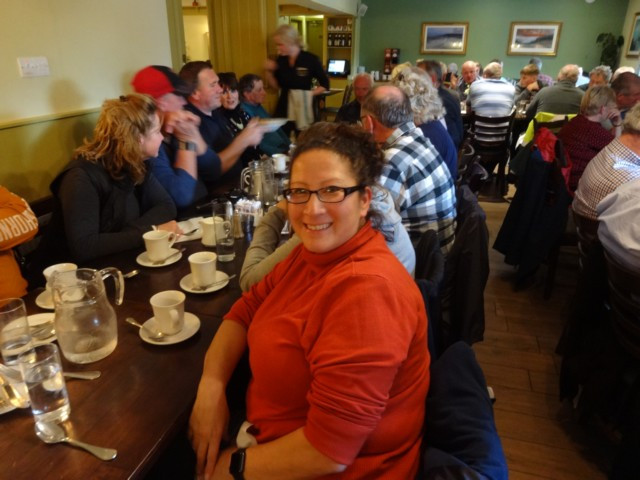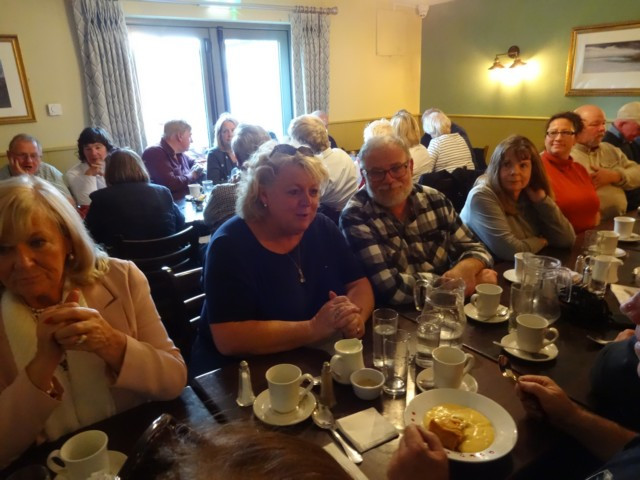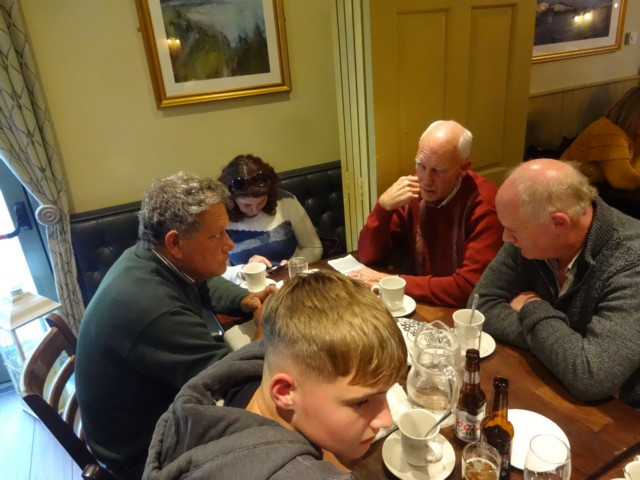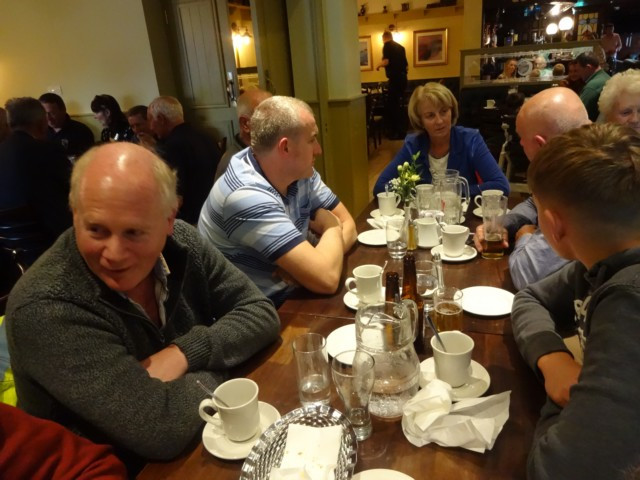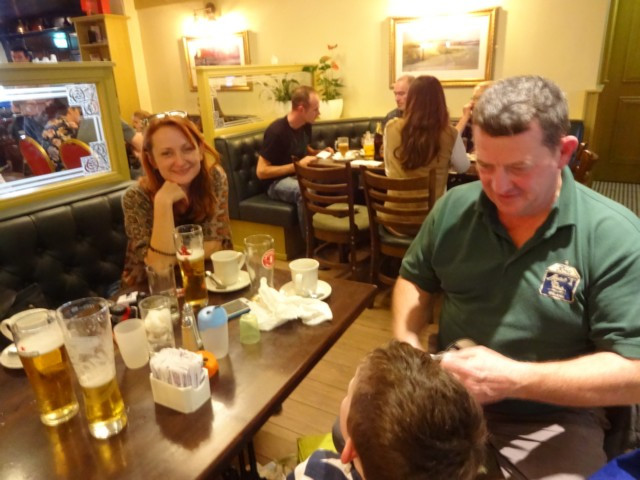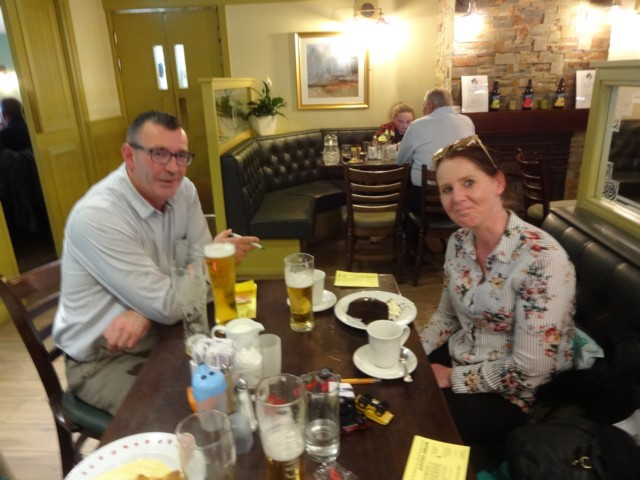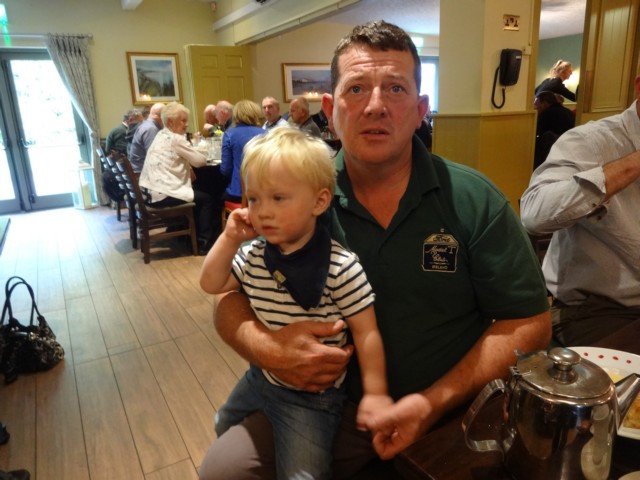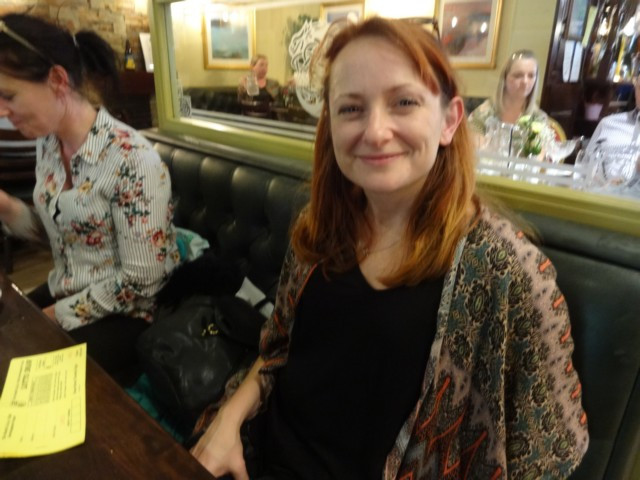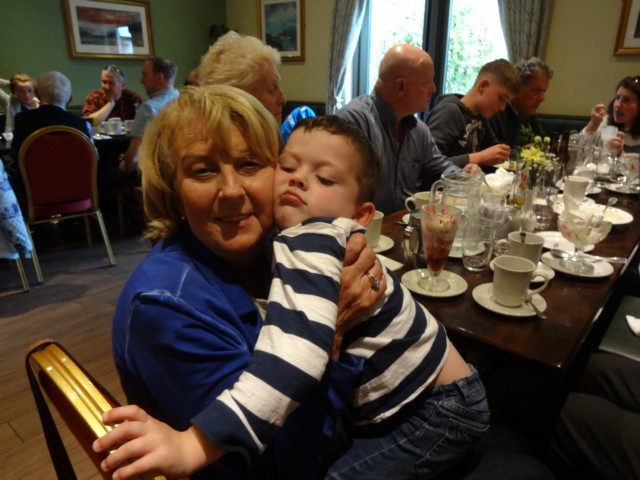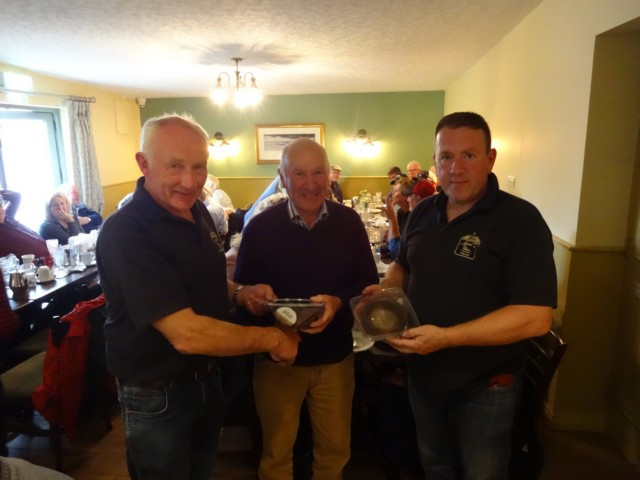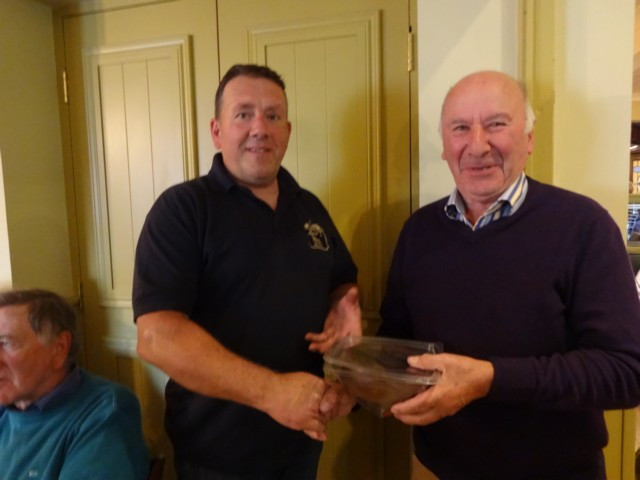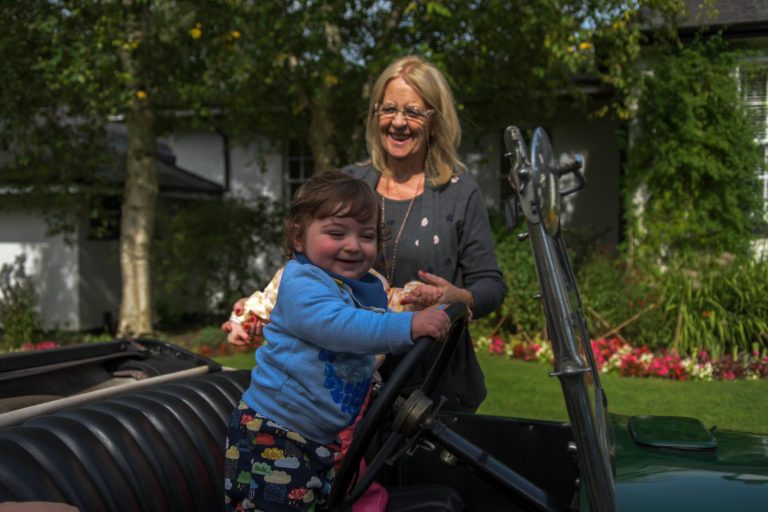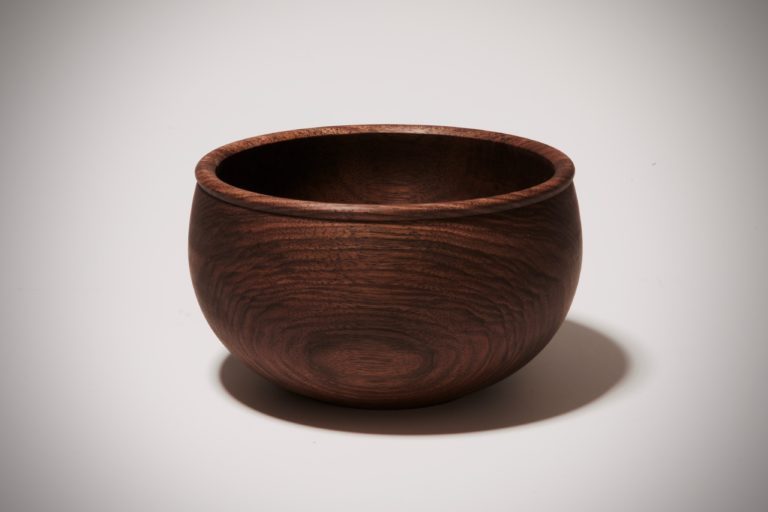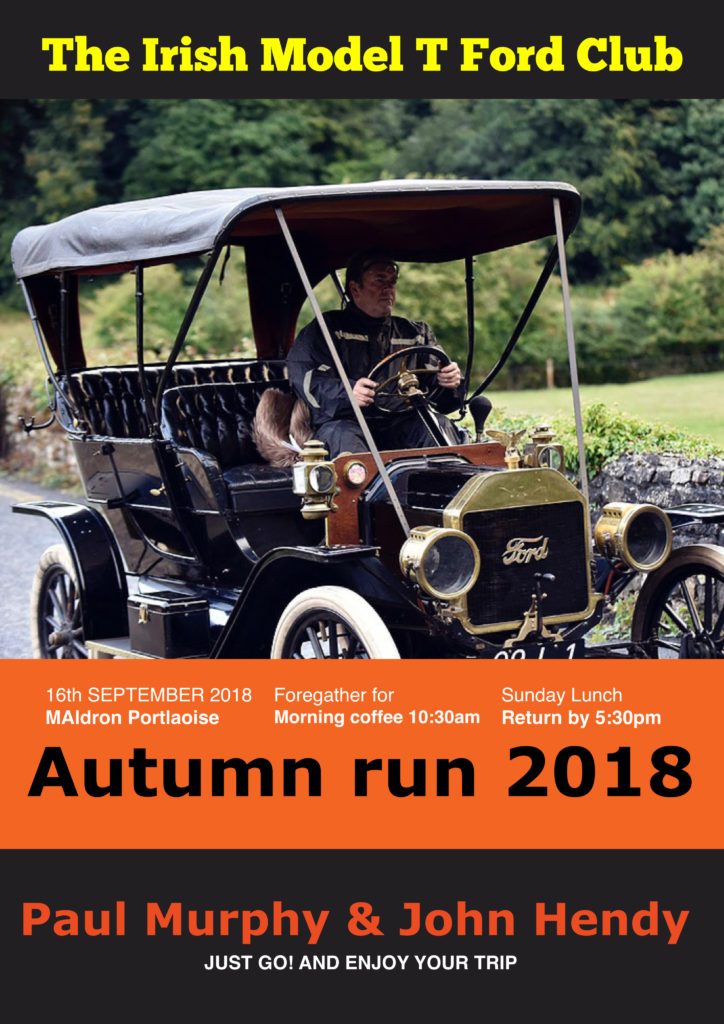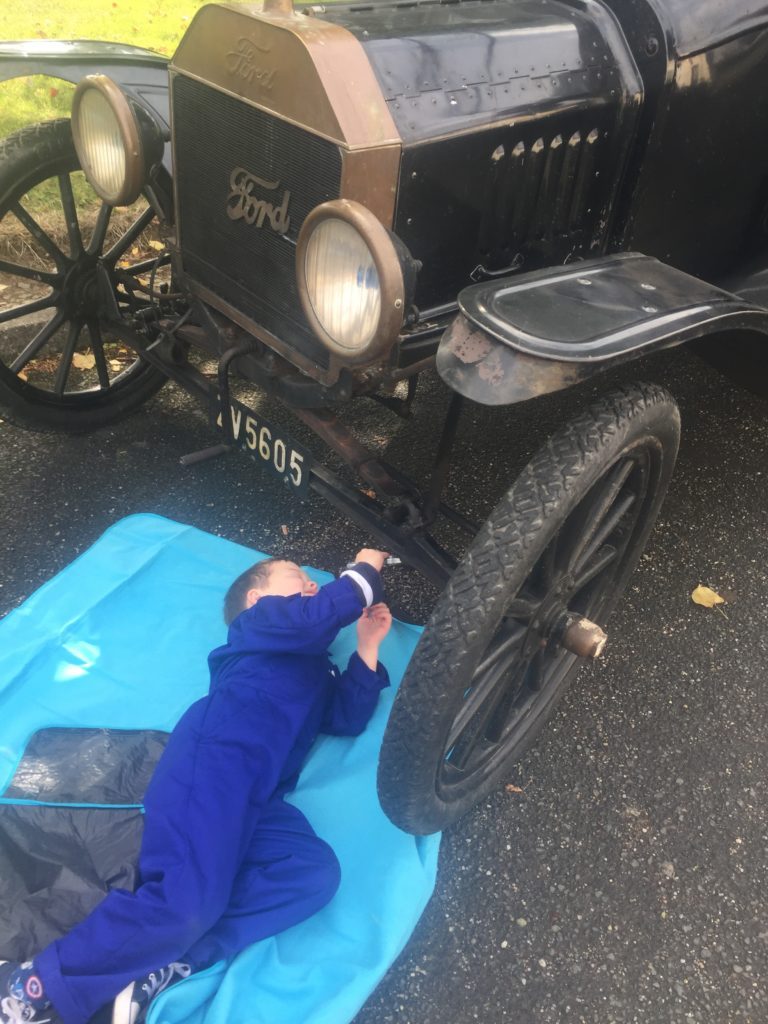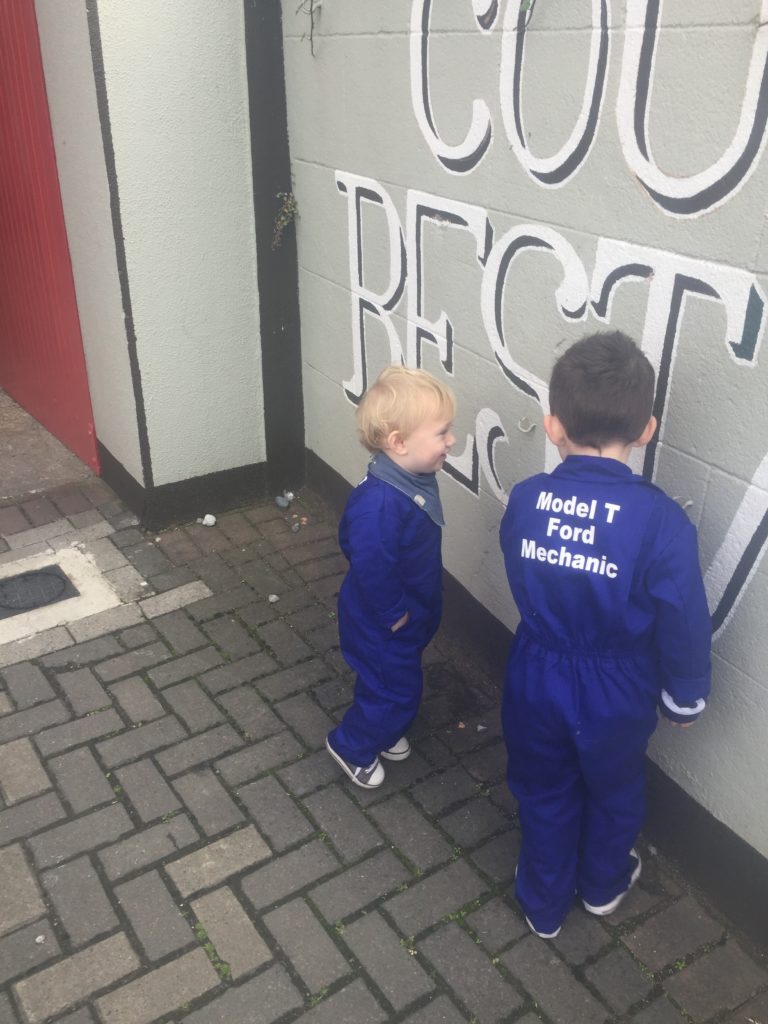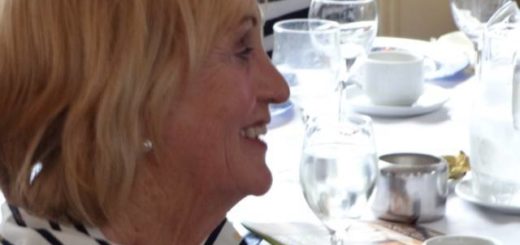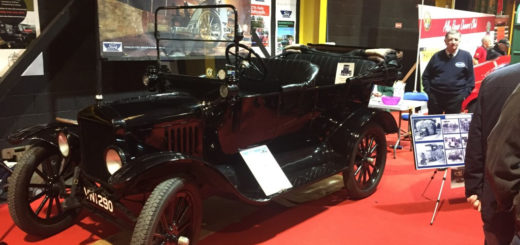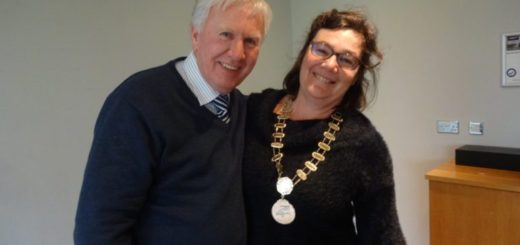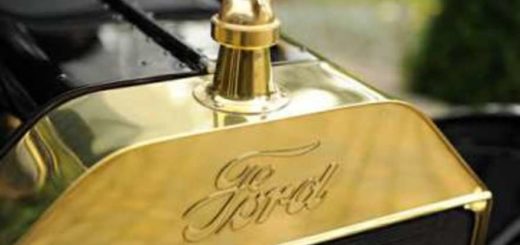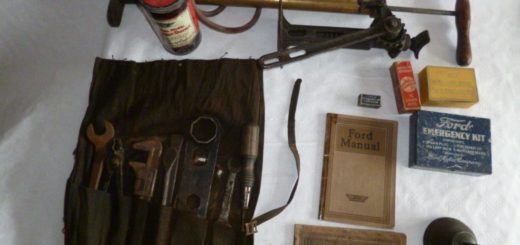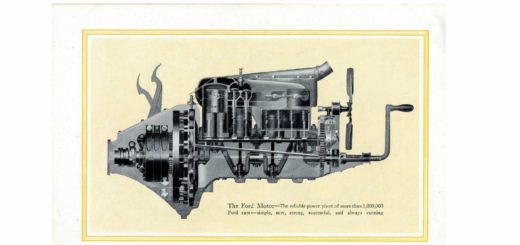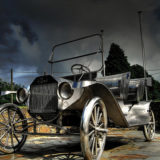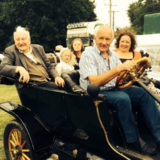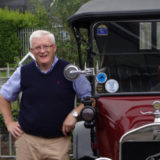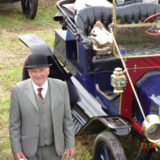Autumn Run September 2018
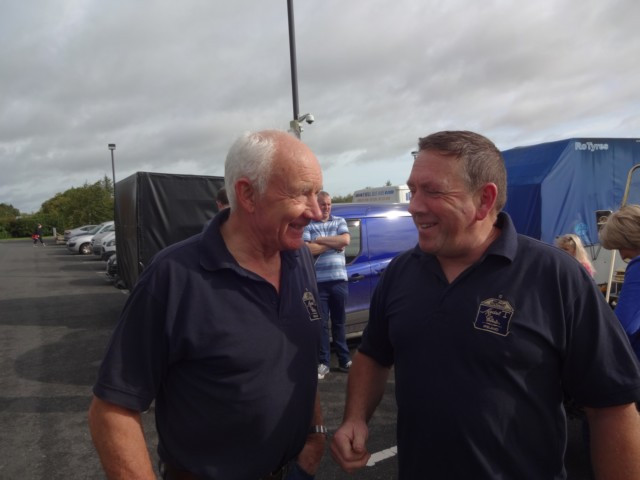
Sunday 16th September 2018 was a bright and sunny day, clear skies and a bountiful assortment of gleaming Model T Ford cars ready for the off at the Maldron Hotel, Portlaoise where organisers Paul Murphy and John Hendy were ready at 10.30am to deliver their briefing to all drivers.
Added to the 22 cars, drivers and passengers was a group of 10 visitors from Texas, USA, who in some shape or form had Murphy connections and they were invited to join in on what was day three of their fortnight tour of Ireland.
The Assembly
Following a meeting and greeting session, we were off on our way to the first stop for morning refreshments. The pictures tell the story of getting vehicles in readiness after trailing from far and wide. Our members came from Donegal to Cork and everywhere in between.
Morning Refreshments
We departed from our rally base and took the scenic drive to the town of Stradbally where we were invited for morning coffee/tea and freshly baked scones. As the sun was shining most of our party took to the tables and chairs on the footpath alongside the 22 Model Ts. Truly a party atmosphere especially because the spectacle attracted town residents and passersby. We enjoyed the stop.
John Hendy pointed out to us the carved lettering on the wall that reads 1903 and told us of its creation. The Gordon Bennett Cup was an annual auto race which was held in various countries throughout Europe, starting in France in 1900. It is seen as the first step on the road to what we now call Formula One. The location for the race was chosen as a result of what nationality won the previous year’s race.
For example, when the British Empire won the cup in 1902, the following year’s race was held in Ireland (because racing was illegal on British public roads) in what was the biggest sporting event to ever take place here up to that time. This particular race caught the public’s imagination in Ireland as over 1,500 people brought their cars over by boat to view this 2-week road racing extravaganza.
As the total number of cars in Ireland was only around 300 at the time this was a hugely important event and provided many Irish people with their first opportunity to see a motor car. Four countries entered teams of three cars each for the contest: France, the United States, Germany and Britain. The cars were painted in national colours – France in blue; the United States in red; Germany in white and Britain, as an appreciation of Ireland’s role in organising the race, chose emerald green.
The contestants were asked to complete a figure-of-eight course with a total distance of 524 kilometres (327.5 miles) and the eventual winner was Camille Janatzy from Belgium, who drove for the German team. he importance of this event to the people of Ireland can be seen by the fact that over 2,300 policemen were drafted in to help marshal the race. It also made Irish people more aware of the motor car as a mode of transport. The original route of the race between counties Laois, Kildare and Carlow is now a major tourist attraction in its own right.
The National Stud – Newbridge
We agreed that we would reach our next stop after midday as our guide at the National Stud would receive us for a tour at 1:00 pm. So, off we went travelling northwards through recently covered blacktop roads edged by manicured hedges along most of the way. Apparently this is the mecca for stud farms in the county of Kildare and in fairness to them all they keep their places clean, tidy and attractive. On arrival by concession we were permitted to park up our vehicles along the main avenue that intersects with the many gardens, paddocks and stables.
We foregathered at the sculpture of William Walker and were taken around the manicured property. Our guide informed us of the history and how it became the Irish National Stud. The farm at Tully was purchased from the Fay family in 1900 by Colonel William Hall Walker. Hall Walker became the most successful breeder of the age, enjoying his finest hour when King Edward VII led Minoru, born and raised at Tully, into Epsom’s winners’ enclosure following a famous victory in the 1909 Derby.
In 1915 the farm and all its stock was gifted to the Crown and became The National Stud under the leadership of Sir Henry Greer. The success continued with the farm producing the winners of all five Classics. In 1942 Sun Chariot, born and bred at Tully, earned herself an indelible place in racing history when landing the fillies’ Triple Crown – the 1,000 Guineas, Oaks and St. Leger – for King George VI.
In 1943, the newly formed Irish Government took over the land and buildings at an agreed valuation. In 1945 the Irish National Stud Company Ltd was formed and it officially took over the running of the Stud on 31st August, 1946. Almost seven decades later, in May 2011, Her Majesty Queen Elizabeth II came to the Irish National Stud to see for herself where the winners of five Classics for her family were produced.
After our tour we enjoyed the continuing sunshine and partook in the offering of delicious ice cream.
The Heath and Farewell
Sunday lunch was arranged at The Heath, a well known and famous spot for those interested in the motor hobby. Having parked up we took the group photograph of members and friends, and of course our ten Texan visitors. We then all sat down to Sunday lunch from a varied and delicious menu. Food standard was as good as always – delicious.
Our Honorary Secretary spoke shortly after lunch. In addressing our USA visitors and by way of information, he reminded them that the greater number of our members are illiterate, meaning they can neither read or write! We had an entry of 10 cars; Michale Rigney had technical difficulties in the morning; David Cuddy had to cancel because of the National Ploughing Championships on the following day. That left 8. Given that 22 T owners showed up, this means that 14 did not respond because it was not within their gift to so do.
One would have thought that under the baton of Sean McEvoy after ten or more Autumn Runs in Co Laoise that routes would have been exhausted. Sean took us to all sorts of places we would never have know about otherwise and his trips were always enjoyable and interesting. Undaunted, John and Paul carried on the good work with the result that all were pleased and satisfied all round on this occasion.
The plight of John Vahey and his misadventures in two Cork hospitals last week was mentioned. Our members were most supportive of John and Gill and expressed the hope that he would be on the mend soonest; and of course sending our best wishes and greetings.
The Vikings who came to Ireland from 795 AD to 840 AD were mainly from the area now known as Norway. While the Vikings raided many Irish towns, and in particular monastic sites, they also helped shape many of Ireland’s largest cities, with Dublin, Waterford, Cork, and Limerick all having strong ties to Vikings. Indeed, the city of Waterford, Ireland’s oldest city, was founded by the Vikings in 914 AD. The goal of archaeology is to understand how and why human behaviour has changed over time.
Archaeologists search for patterns in the evolution of significant cultural events such as the development of farming, the emergence of cities, or the collapse of major civilizations for clues of why these events occurred. Last year an archaeologist discovered an eleventh century bowl, recently uncovered on a Viking settlement in Dublin and now in the collection of The National Museum of Ireland.
ts elegant shape is the inspiration for our gift to those who organise and event for our Club. Former Club President Timothy Kean made a presentation to John Hendy and Paul Murphy, as an expression of our Club’s thanks for their endeavours.
John Hendy responded to say how pleased he was with the turn out. He thanked marshals and Tail End Charlie for their assistance with special reference to Anne Duffy for making and erecting directional signs along the route of our journey. He also appreciated the good manners and safe driving of our members and wished all a safe journey home.

